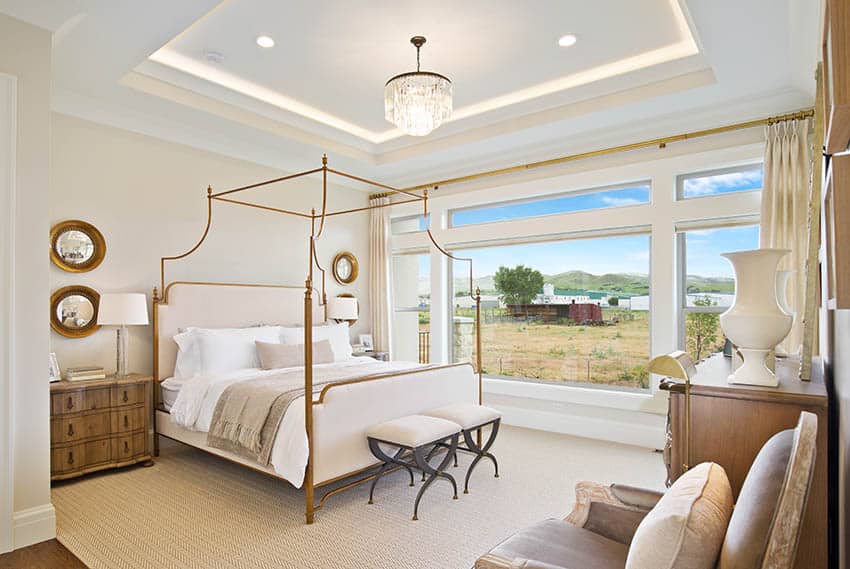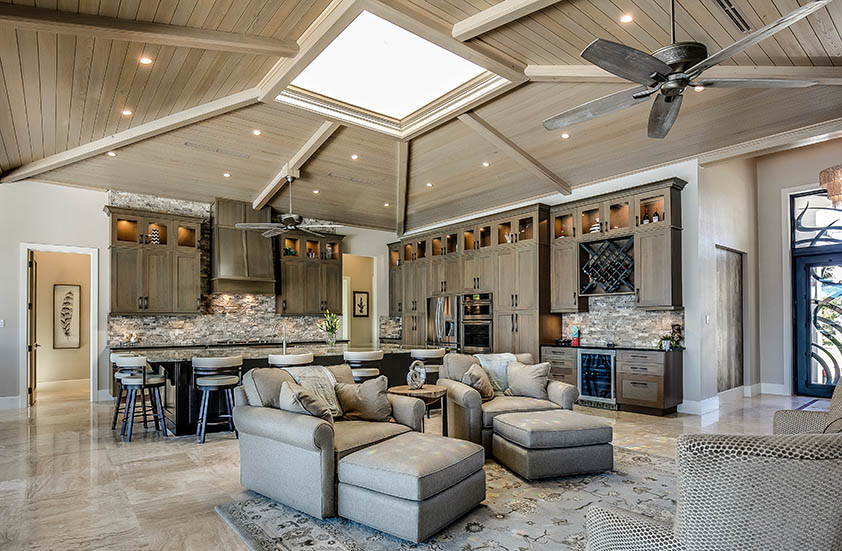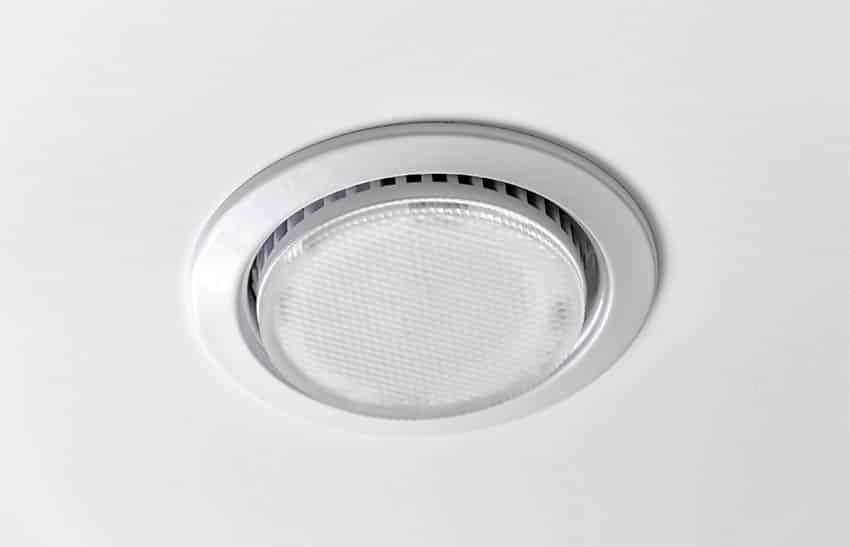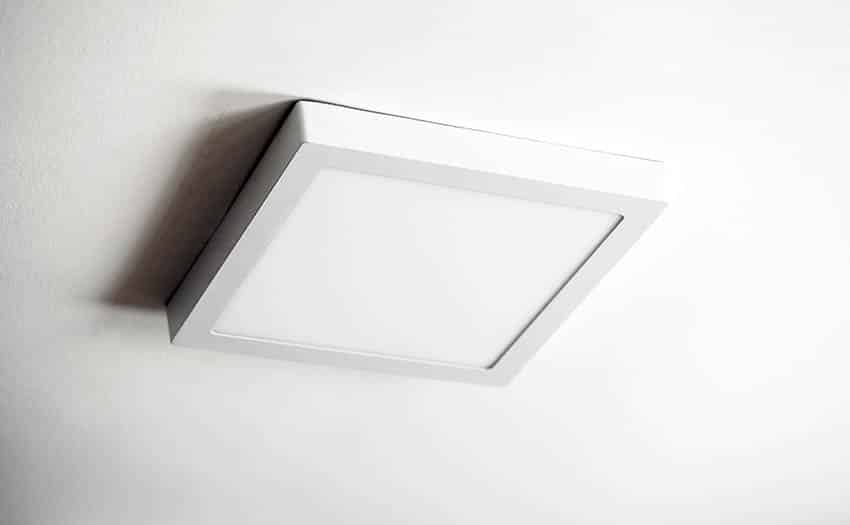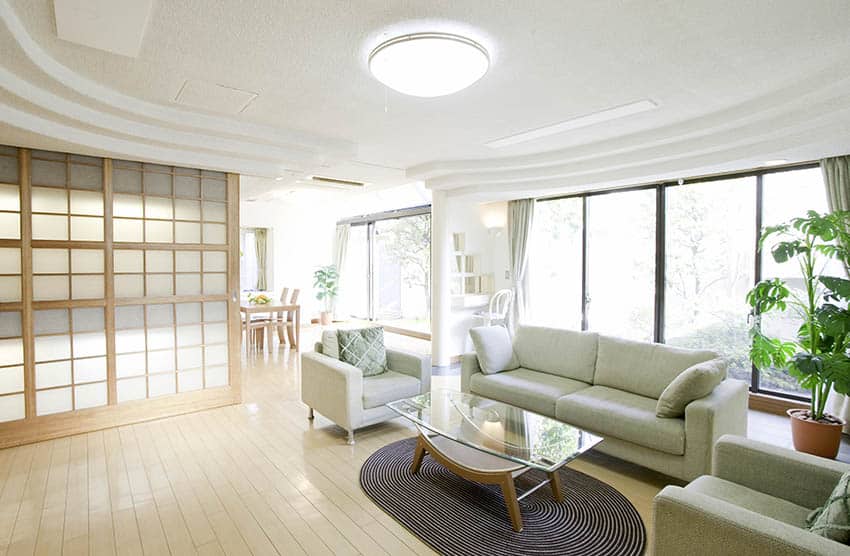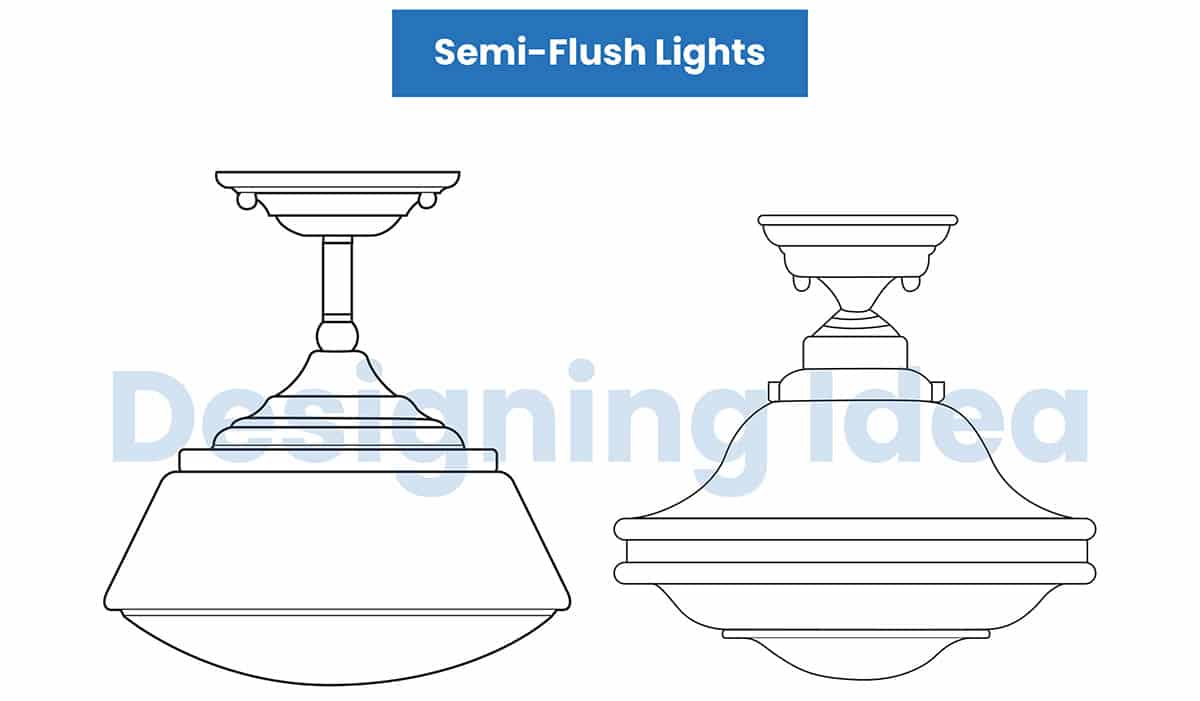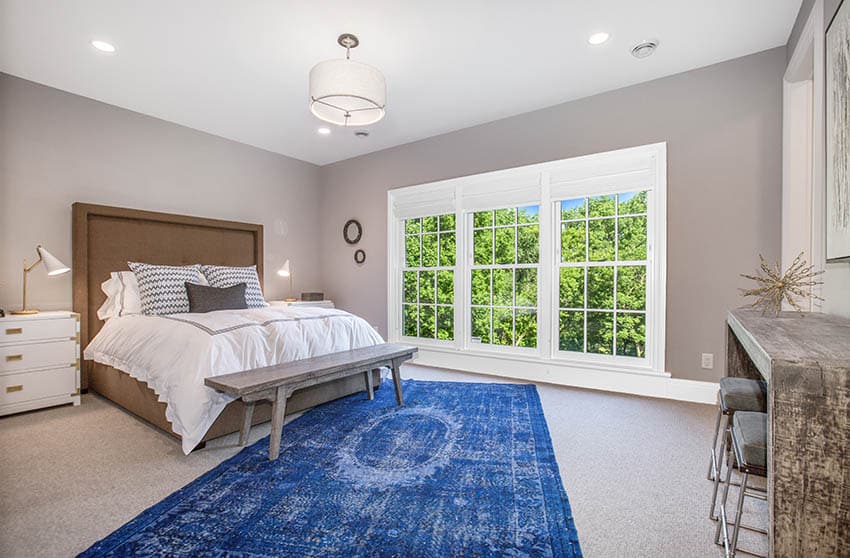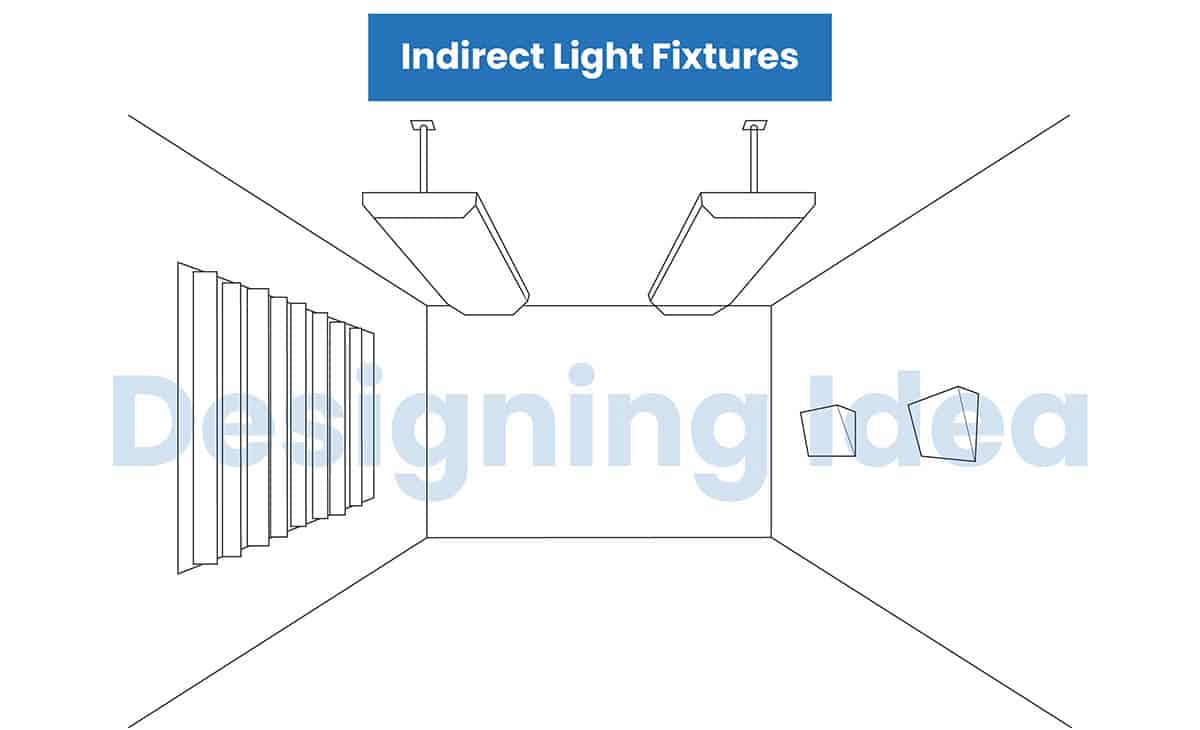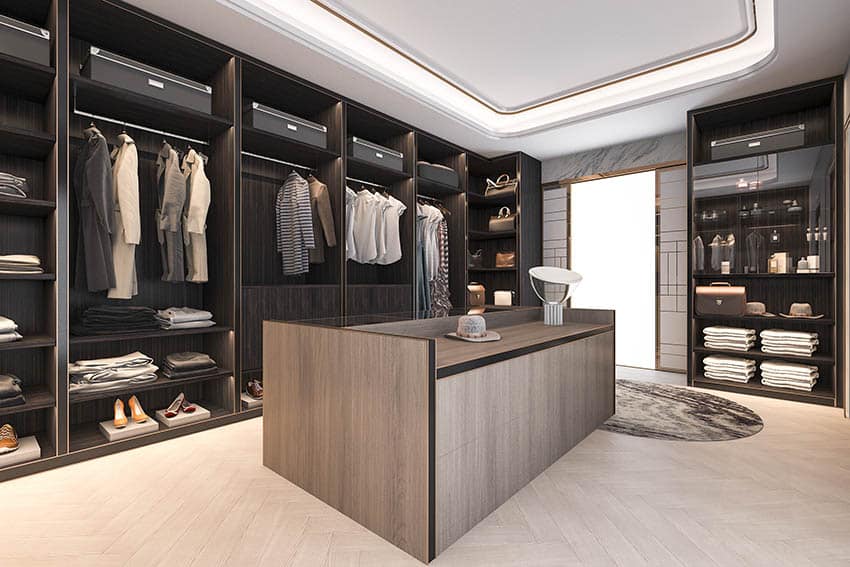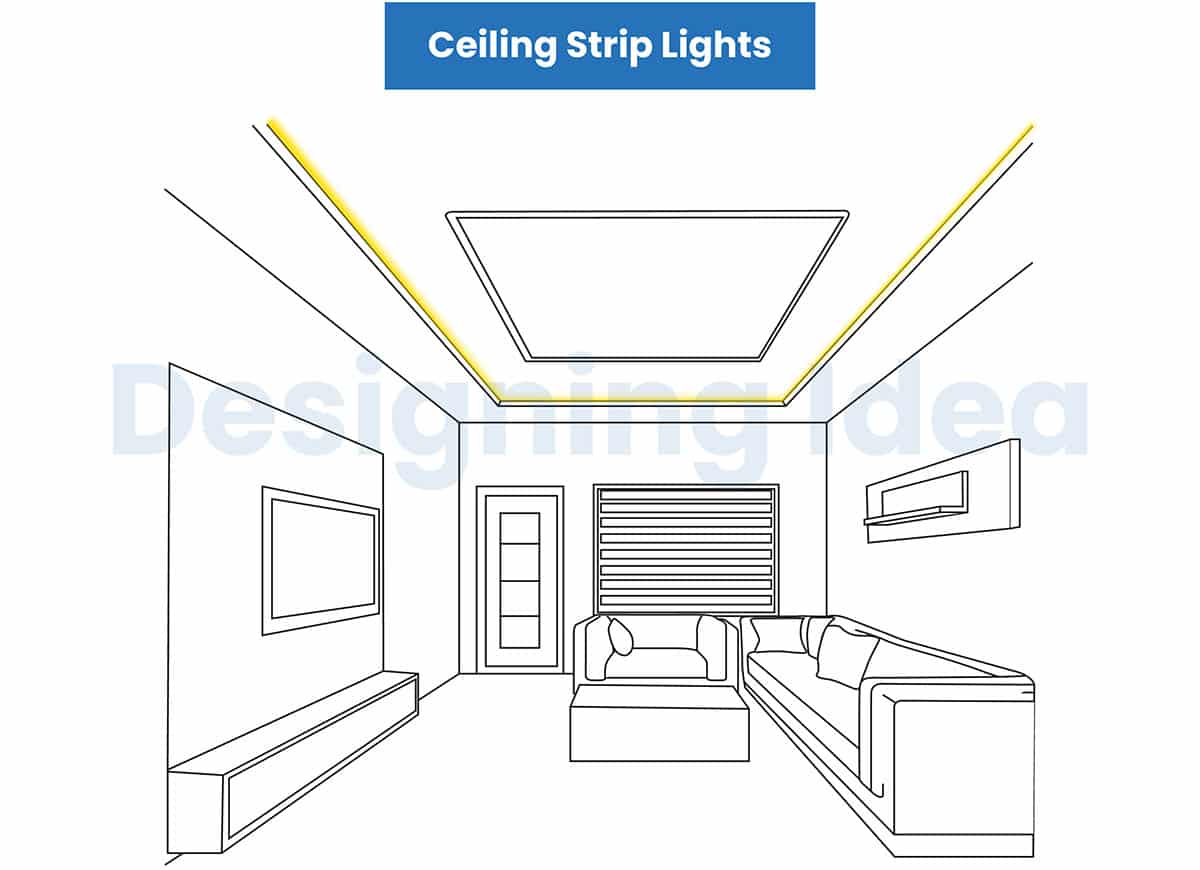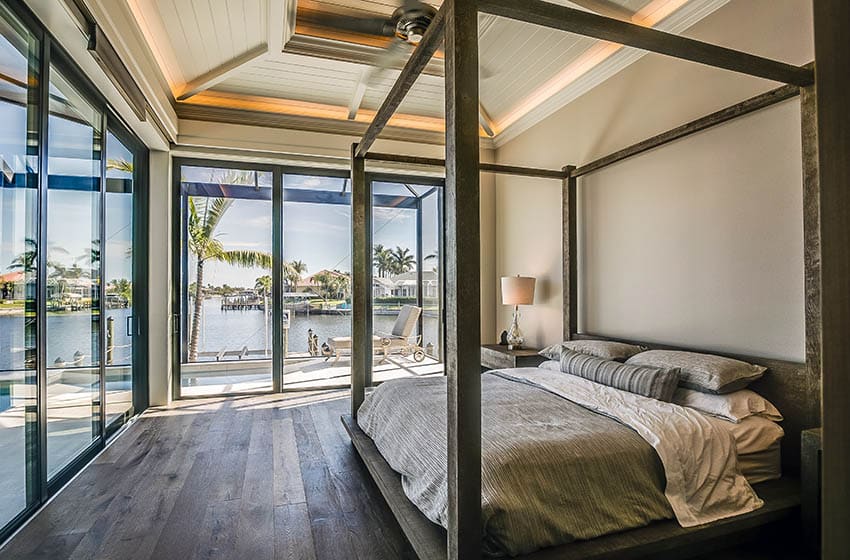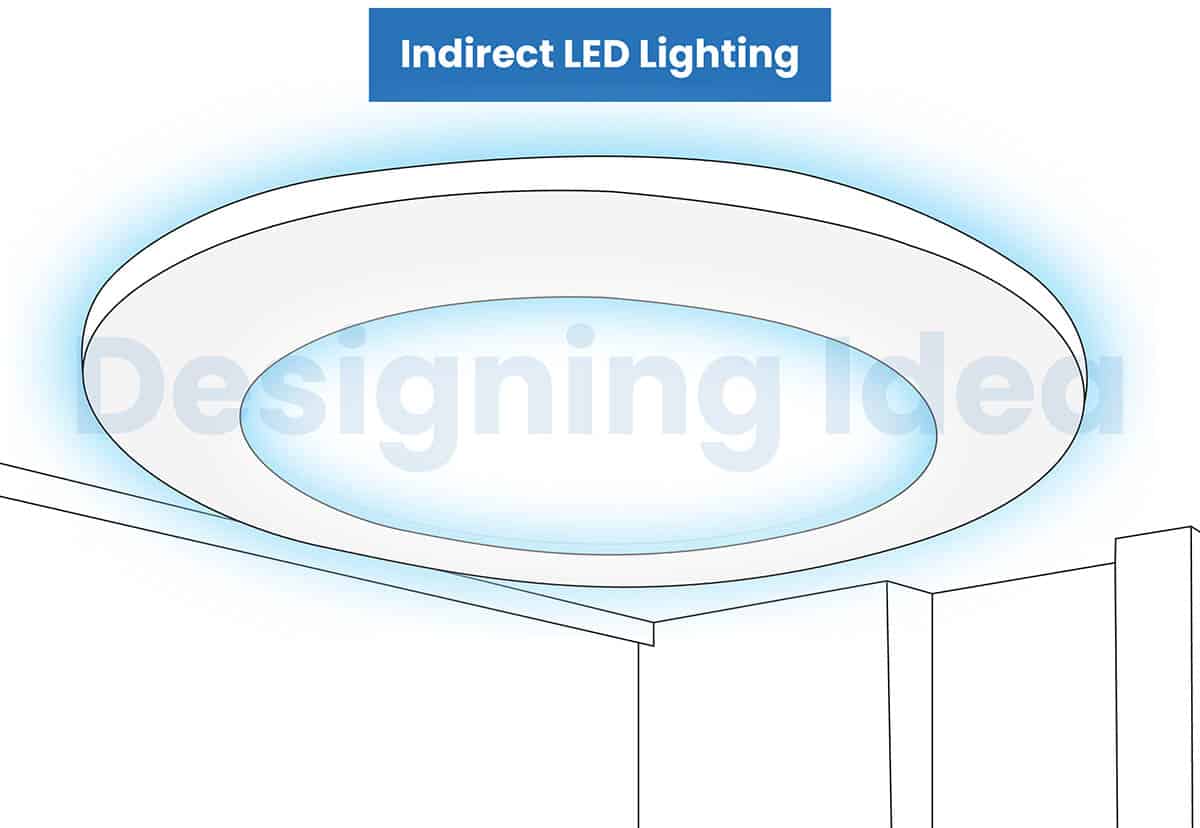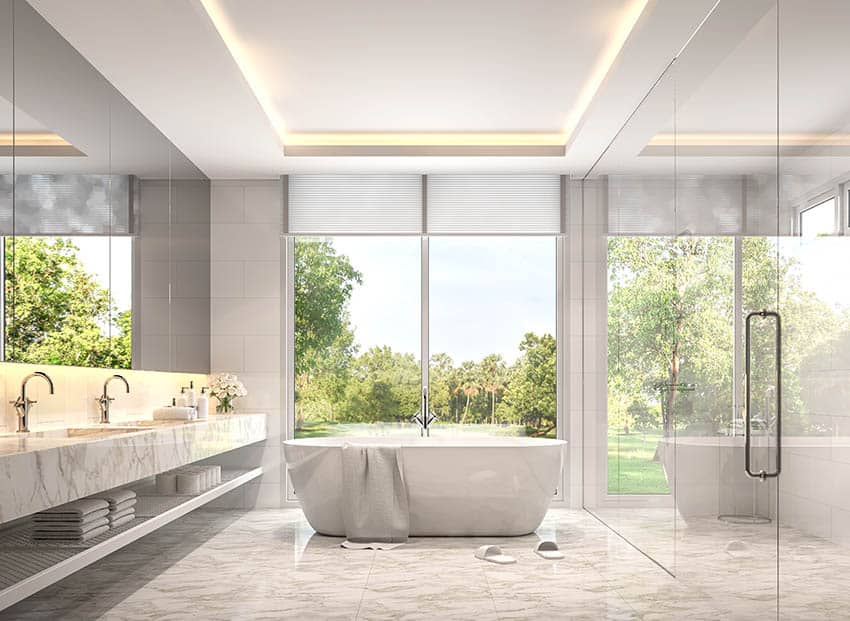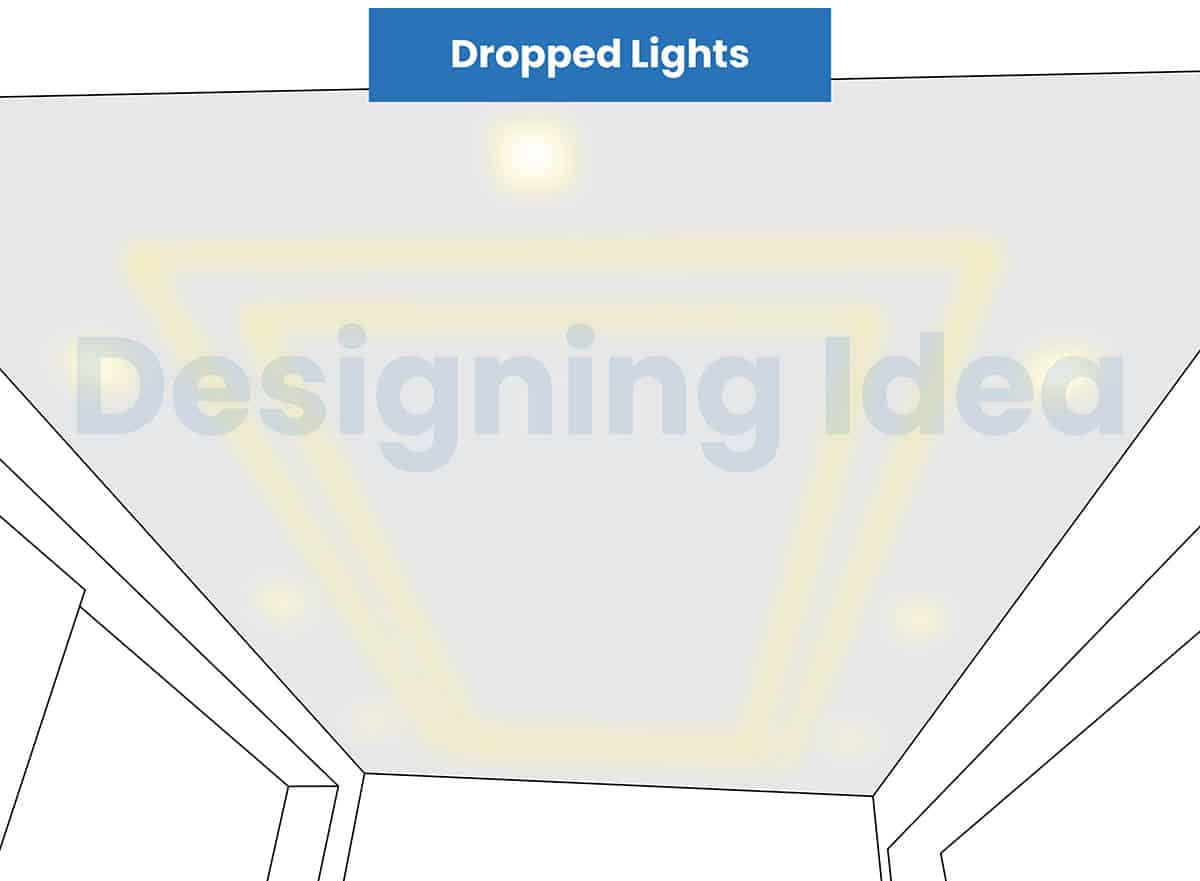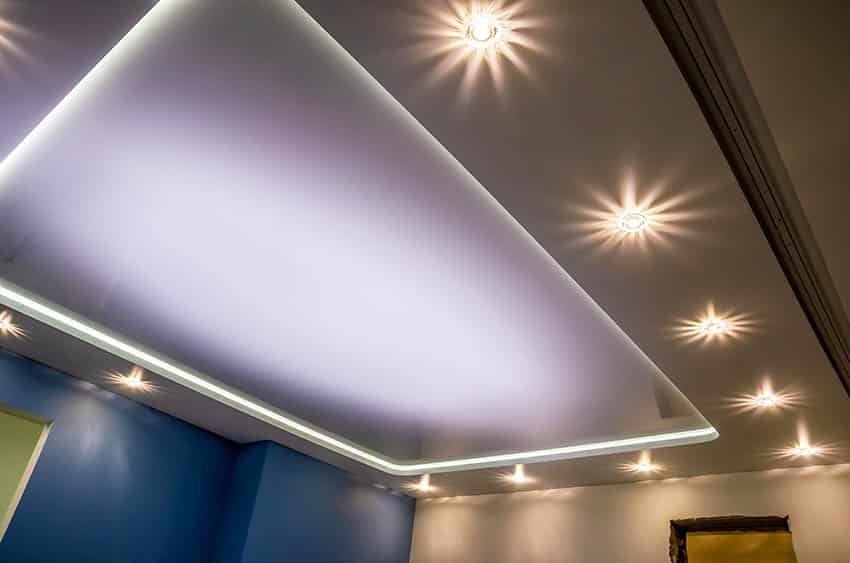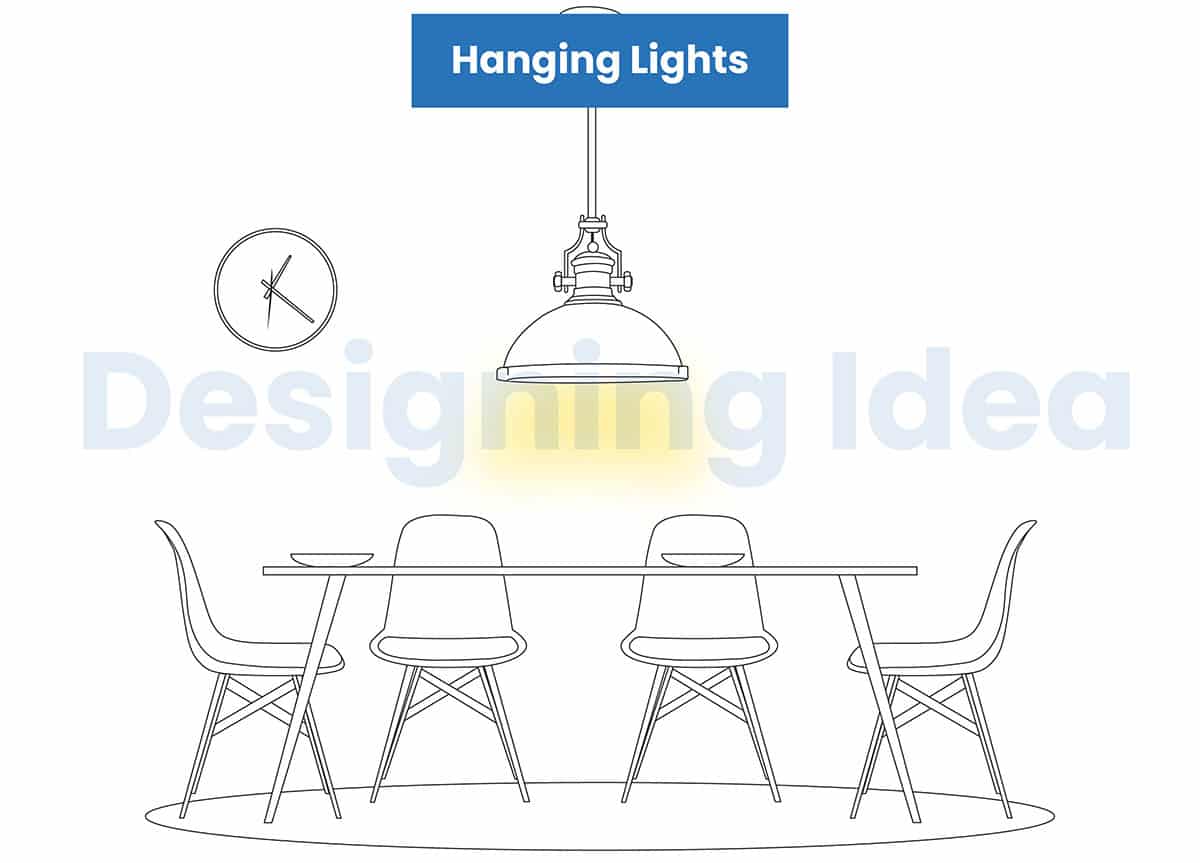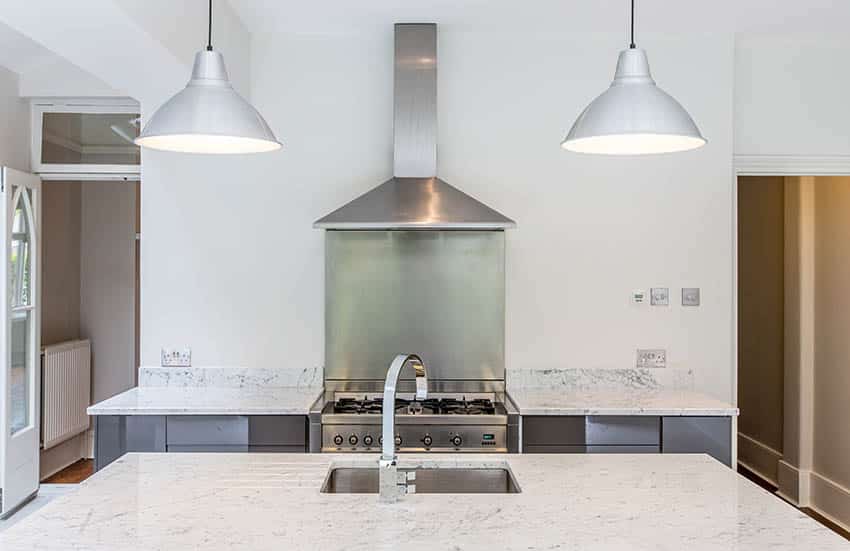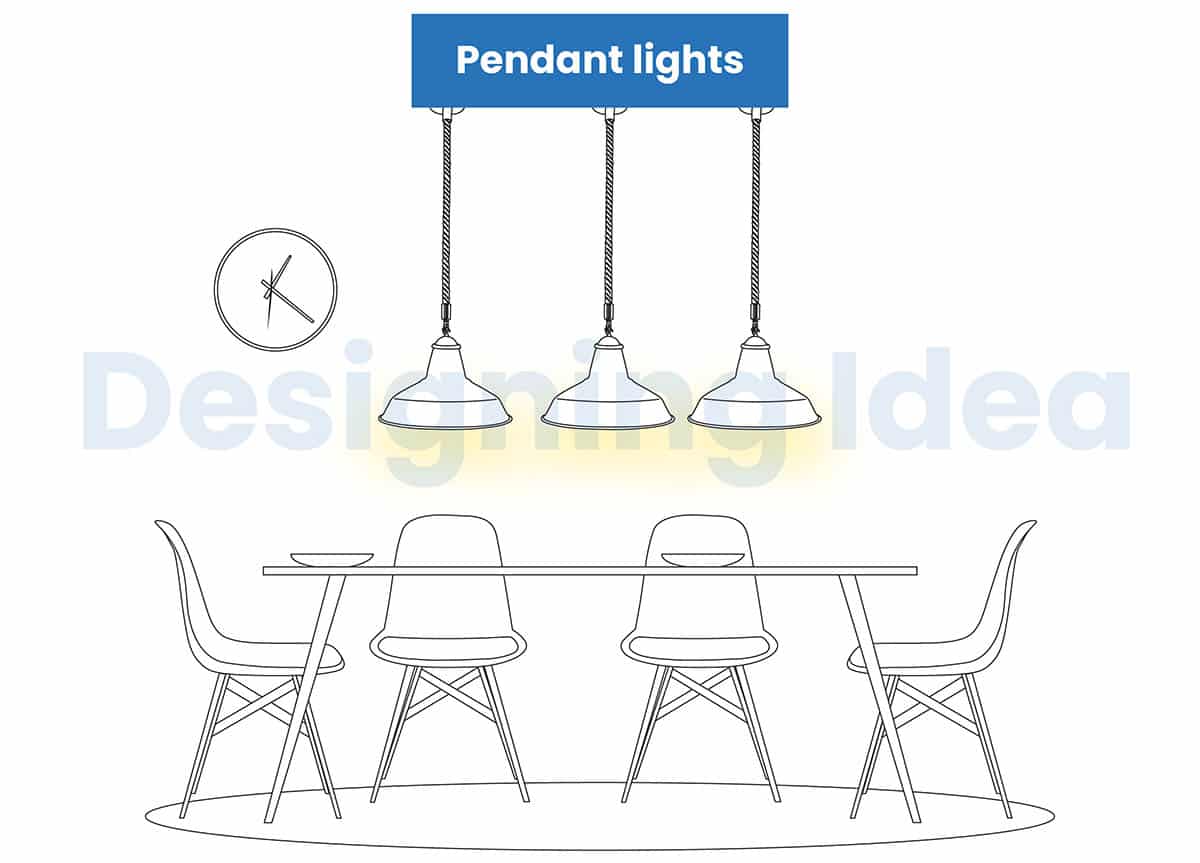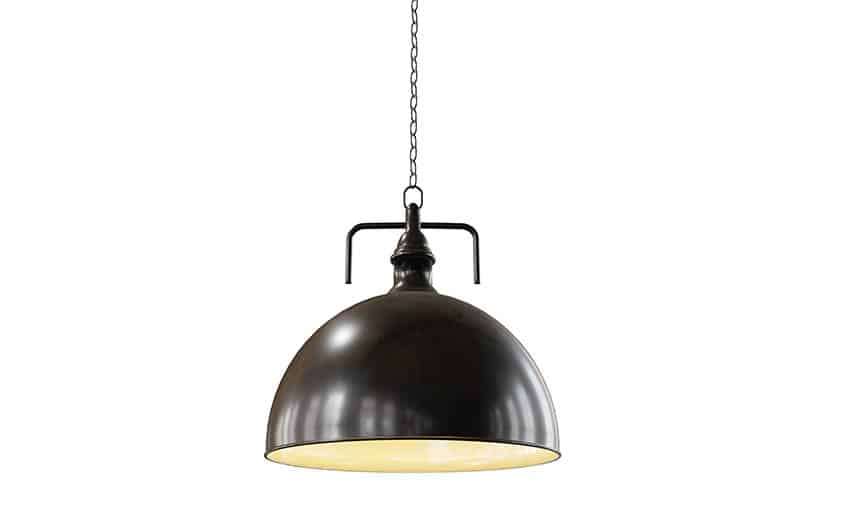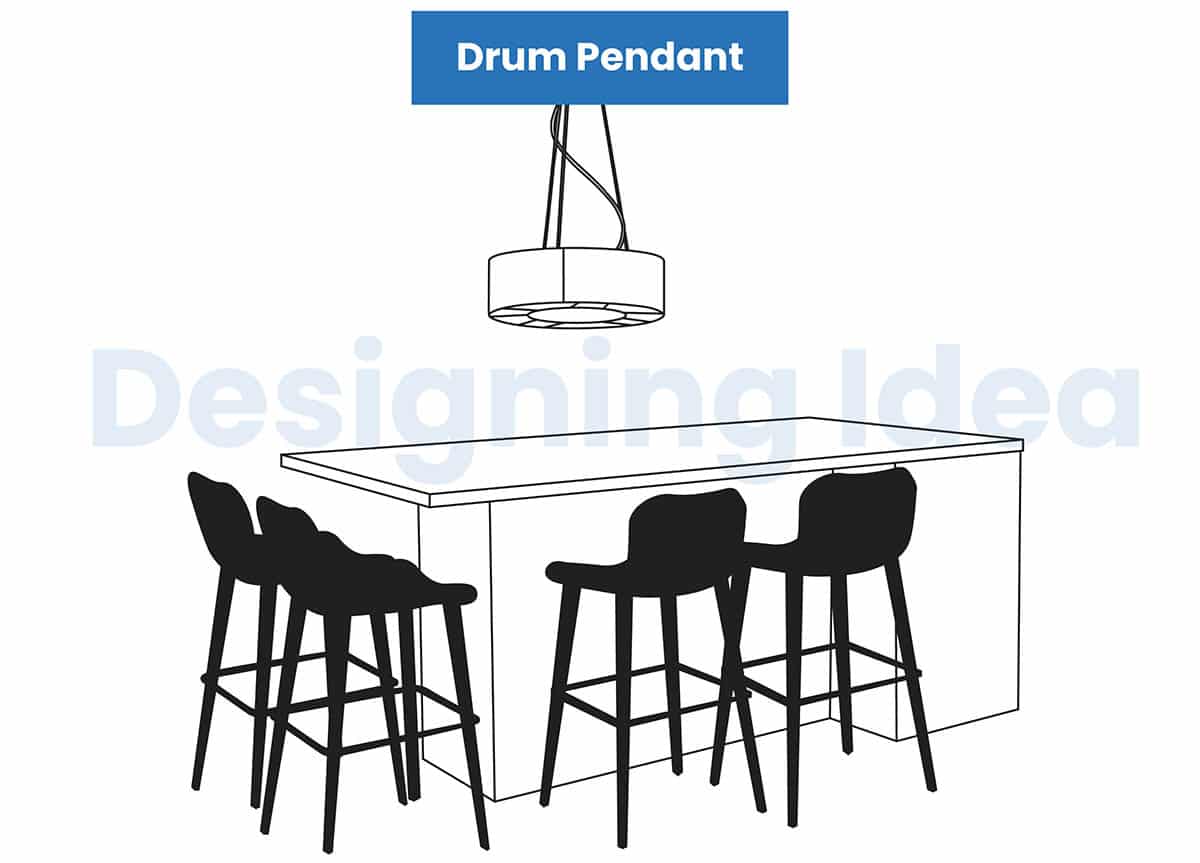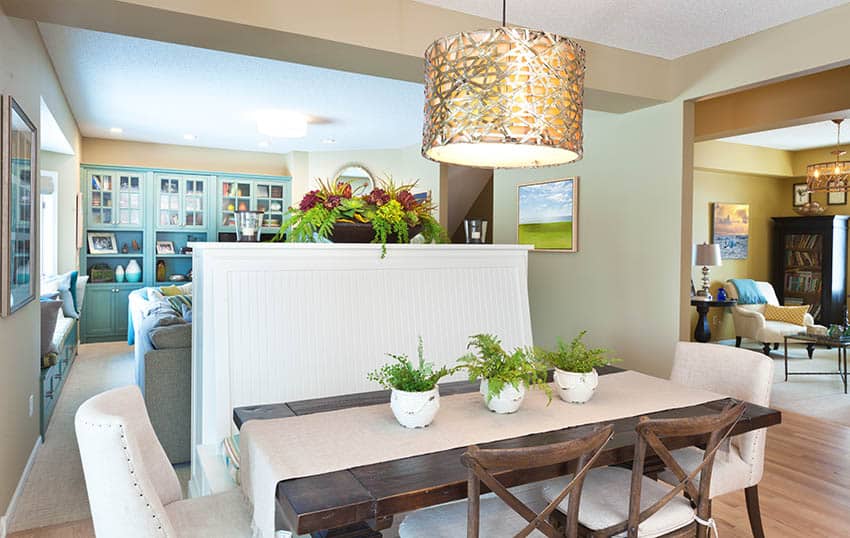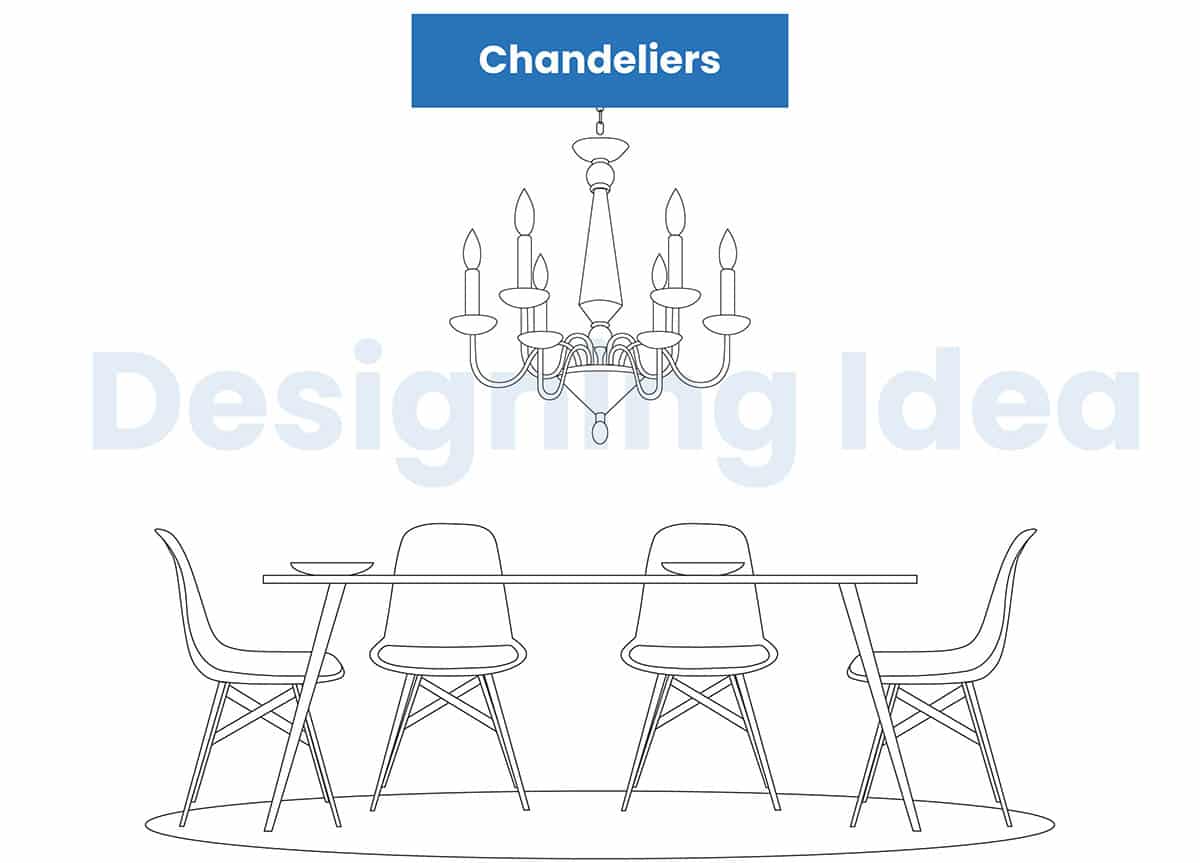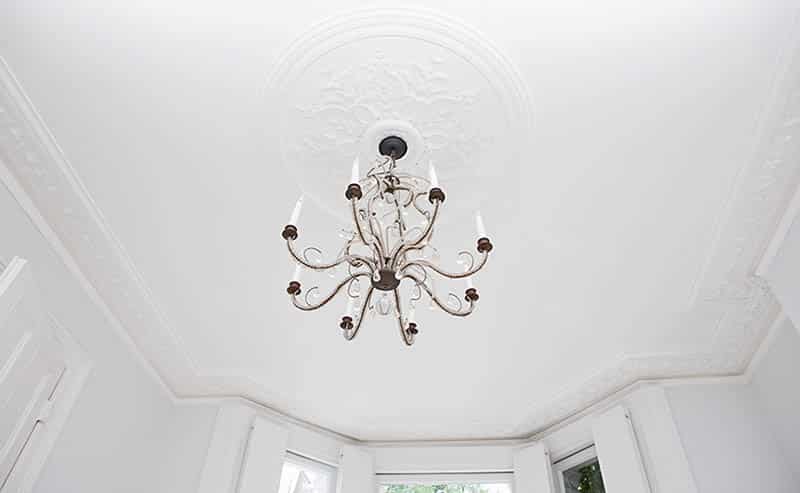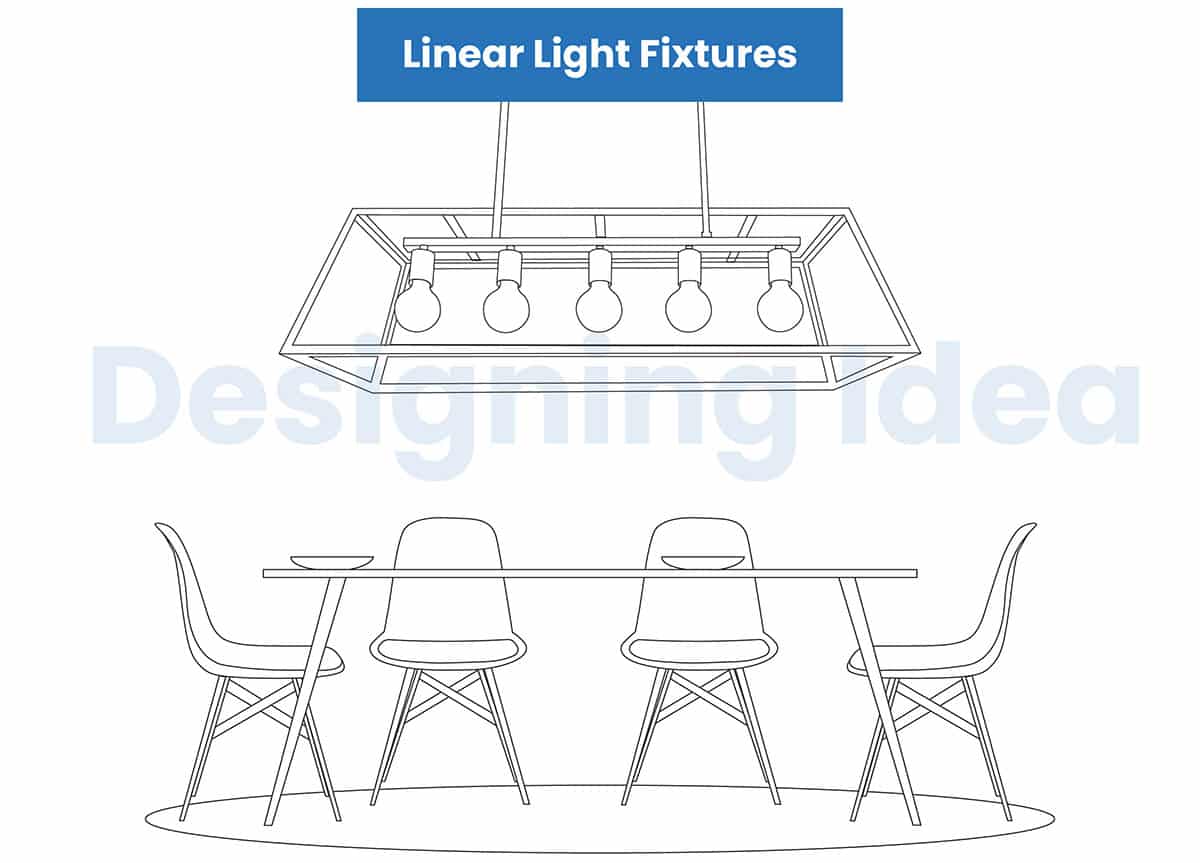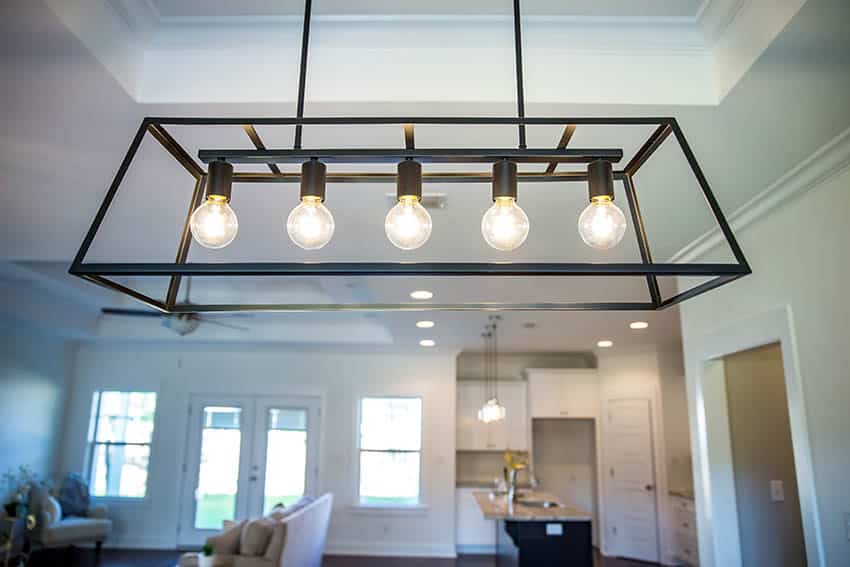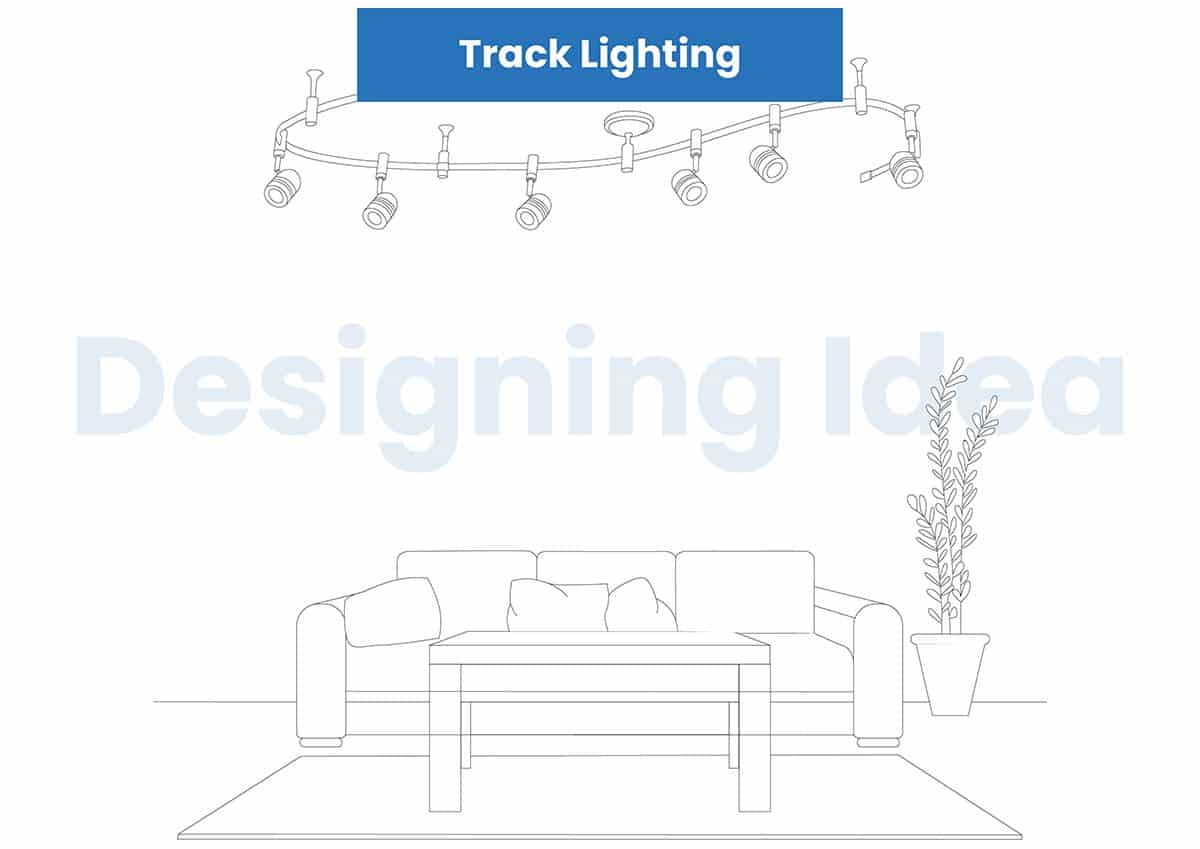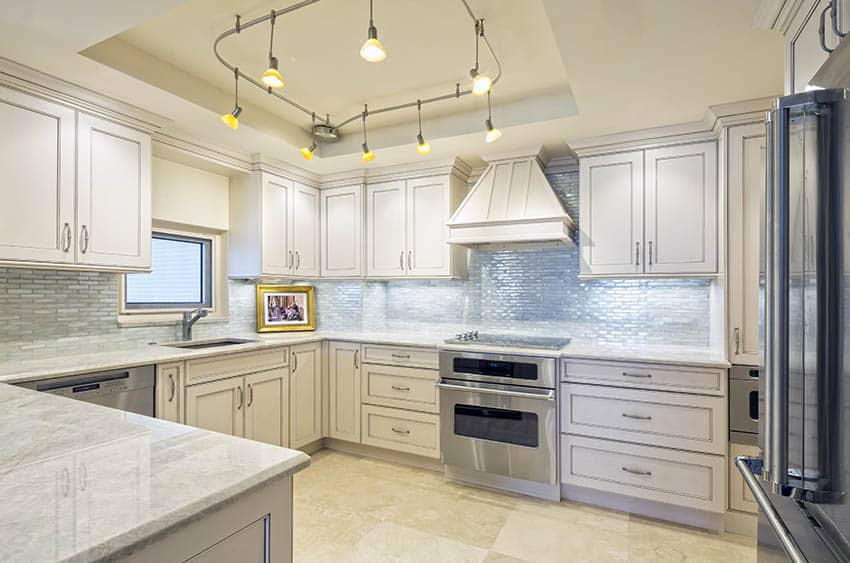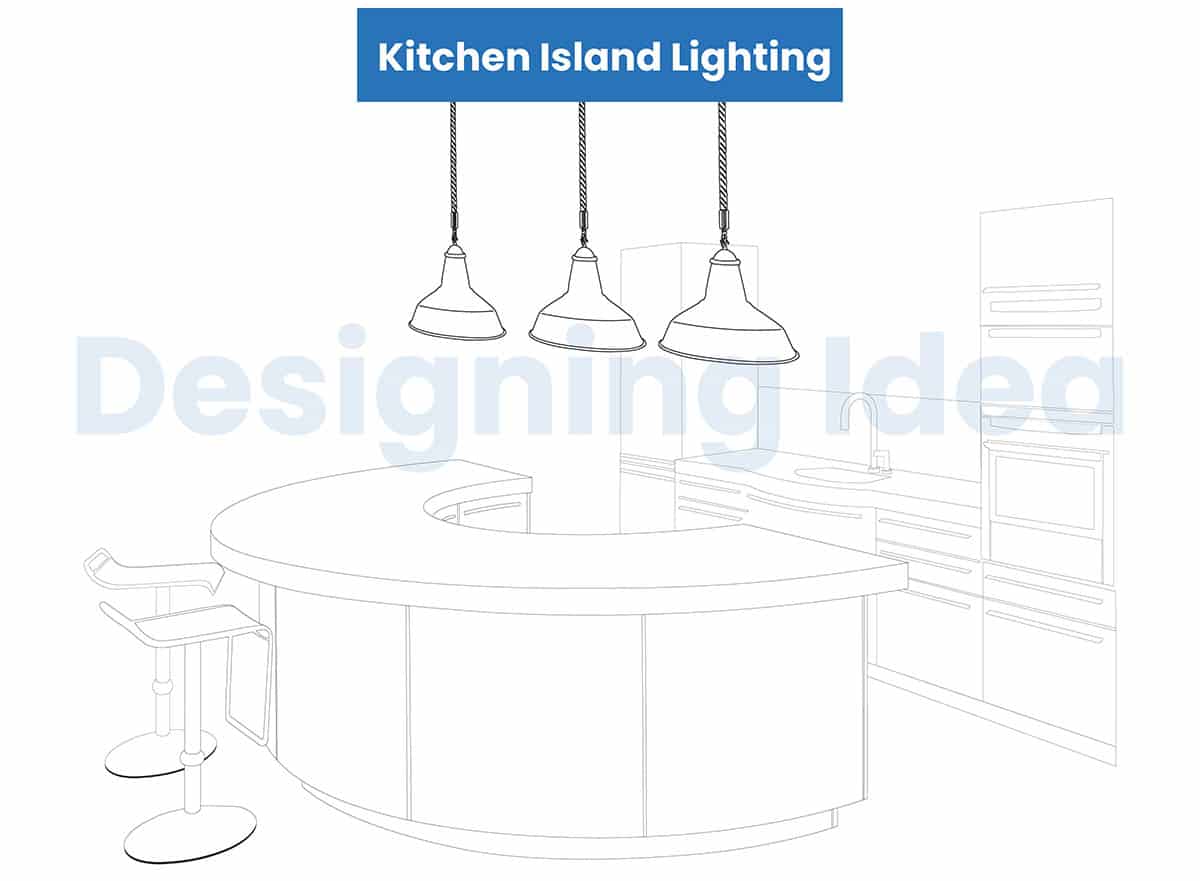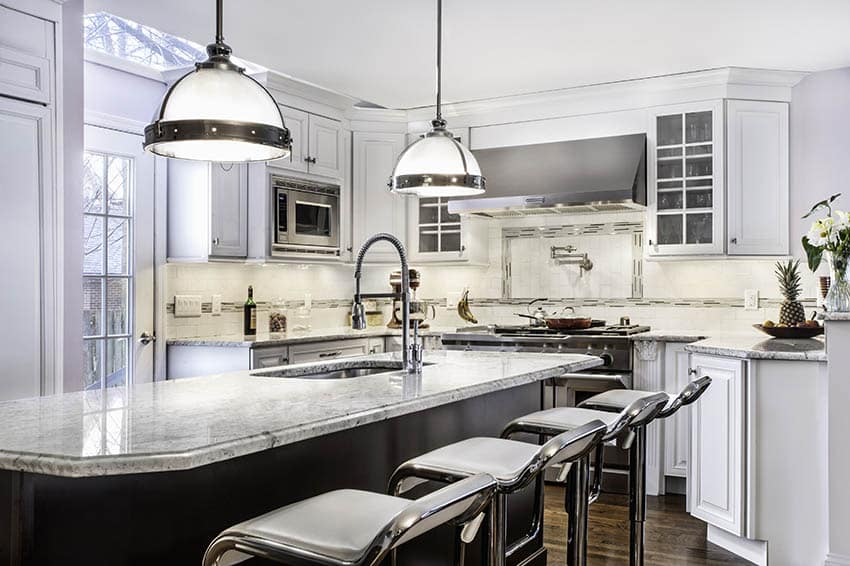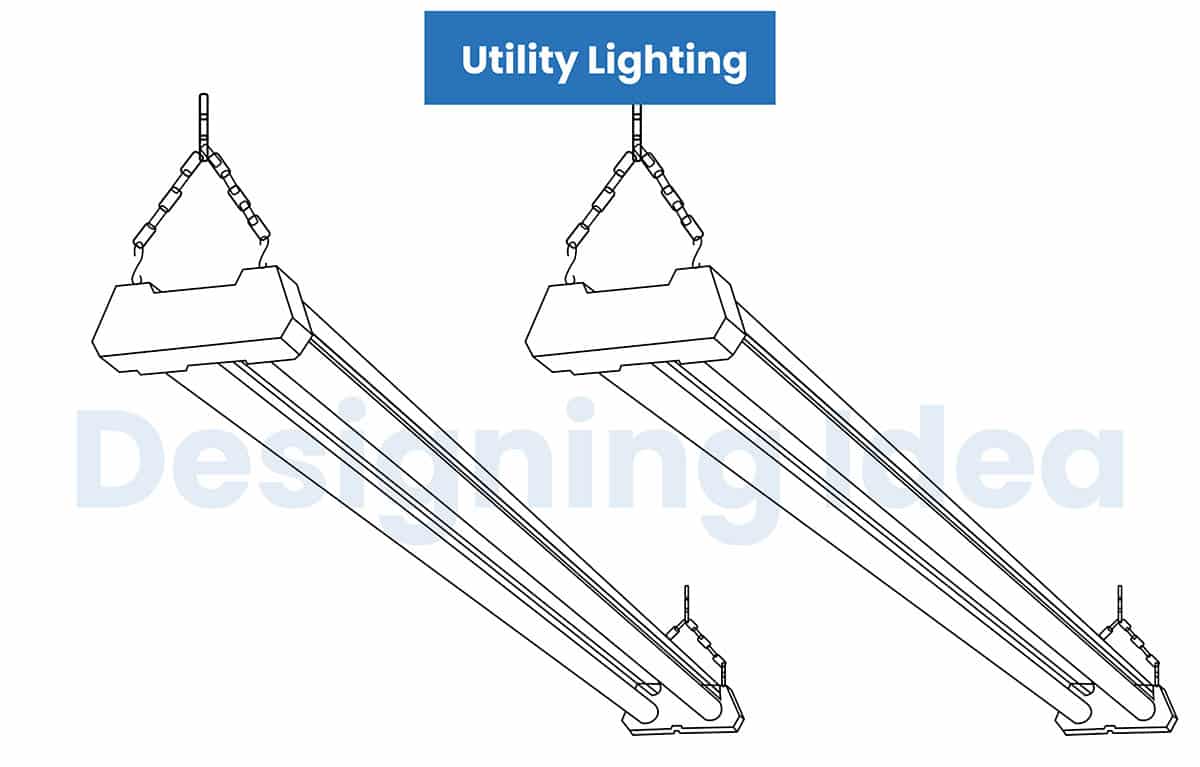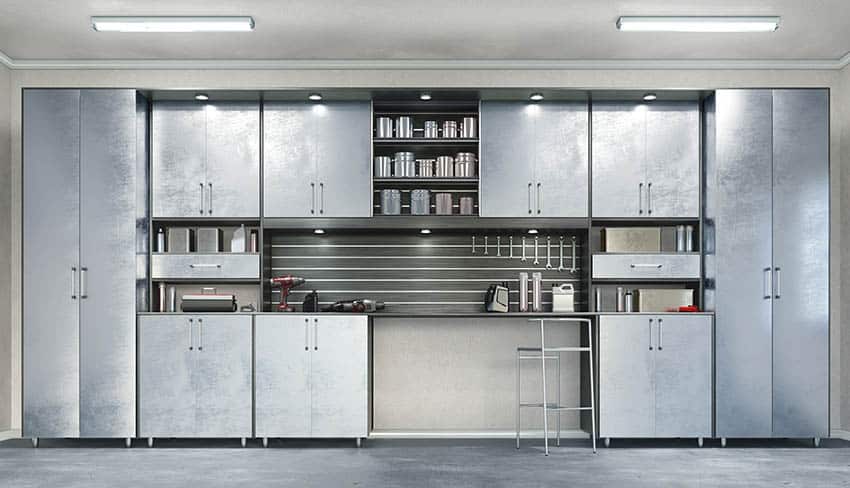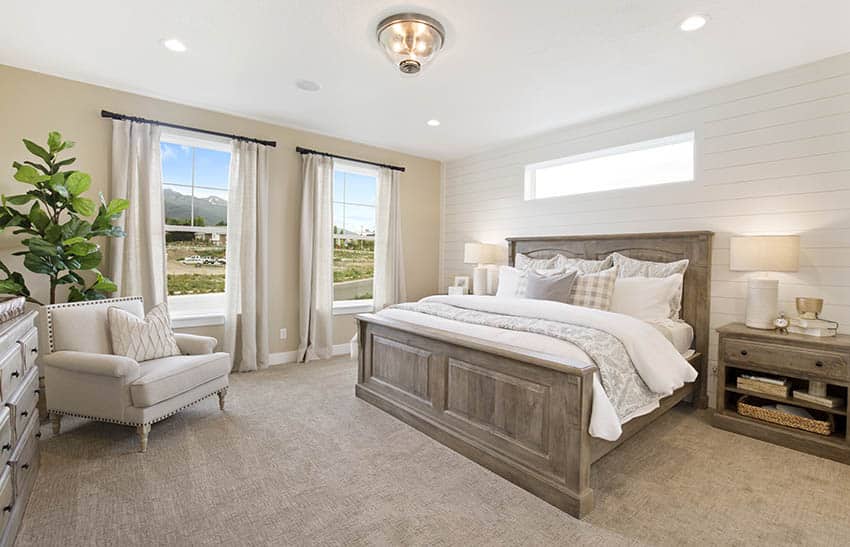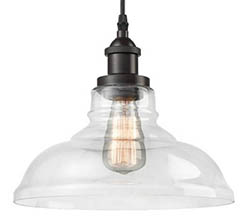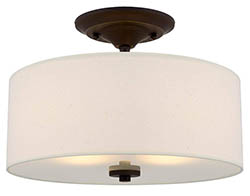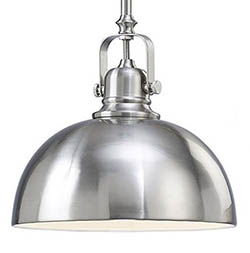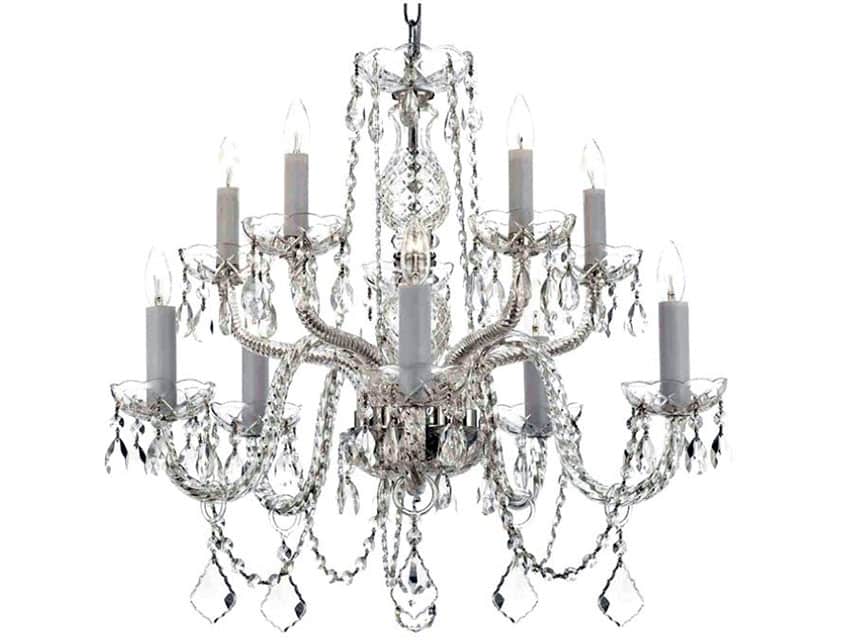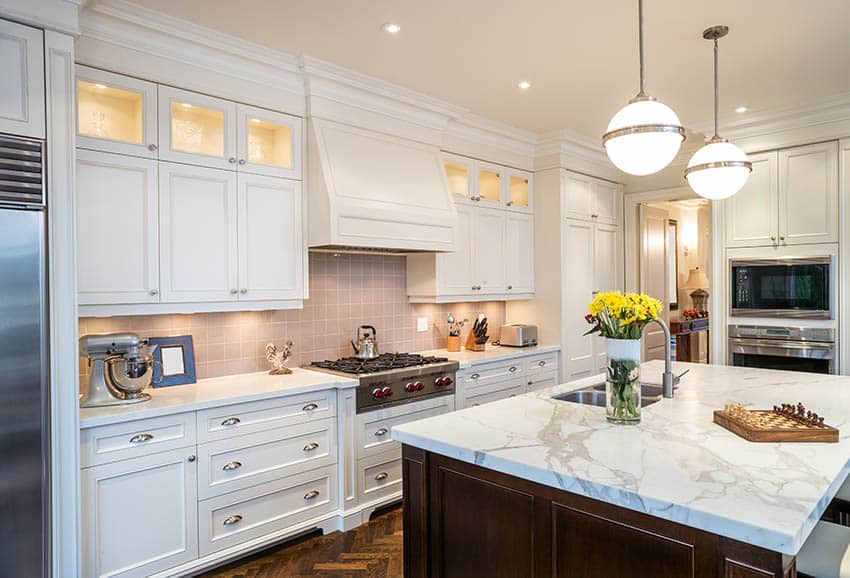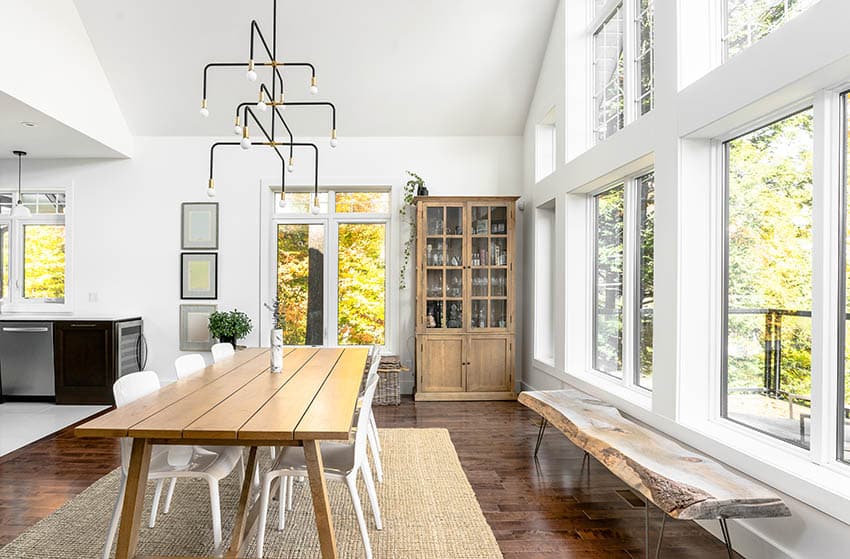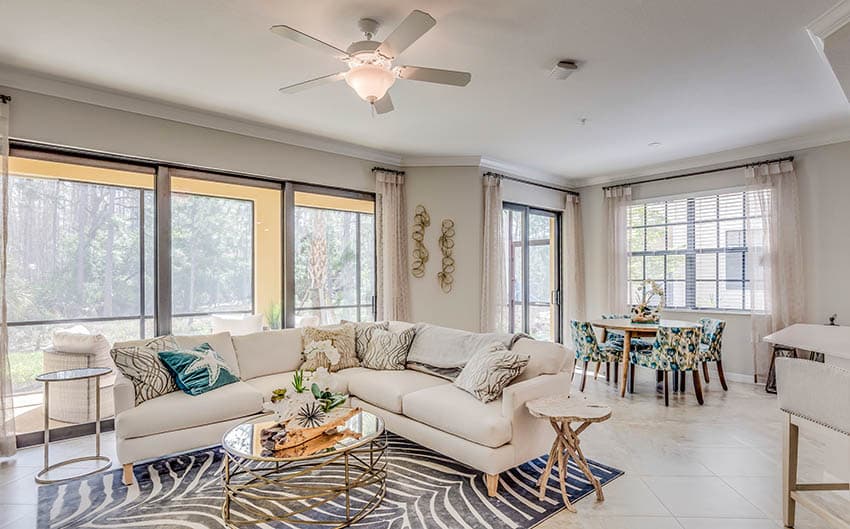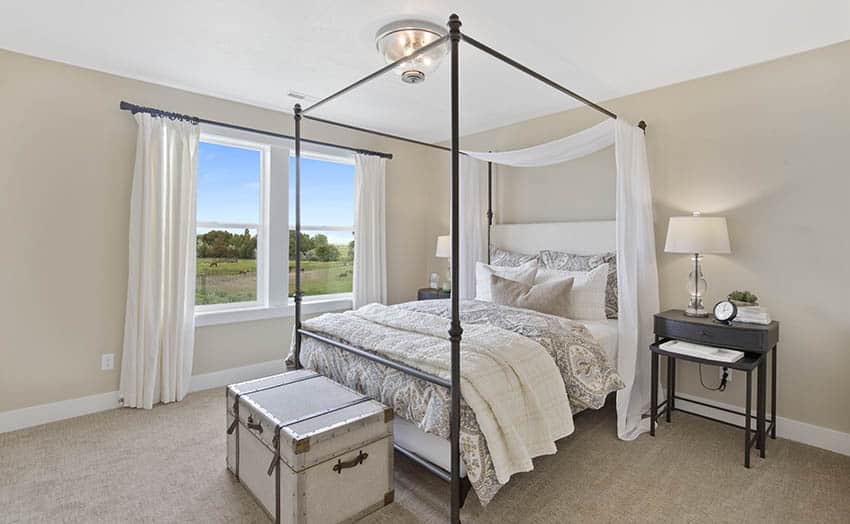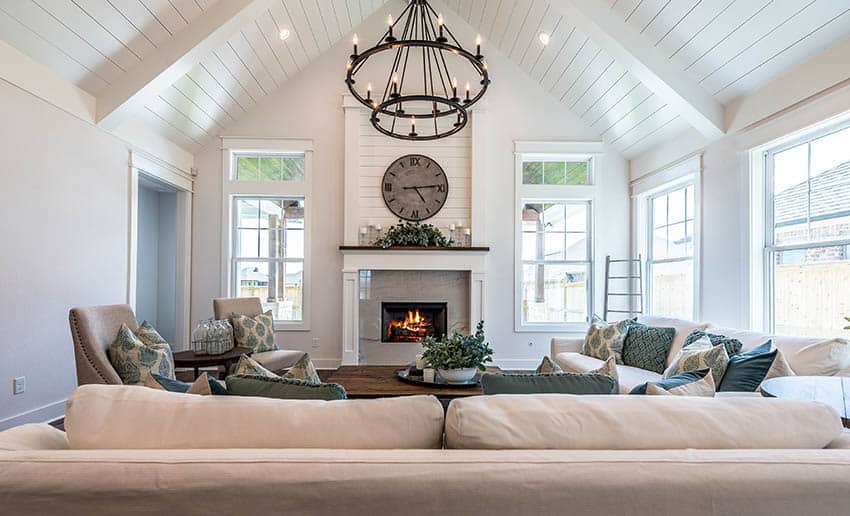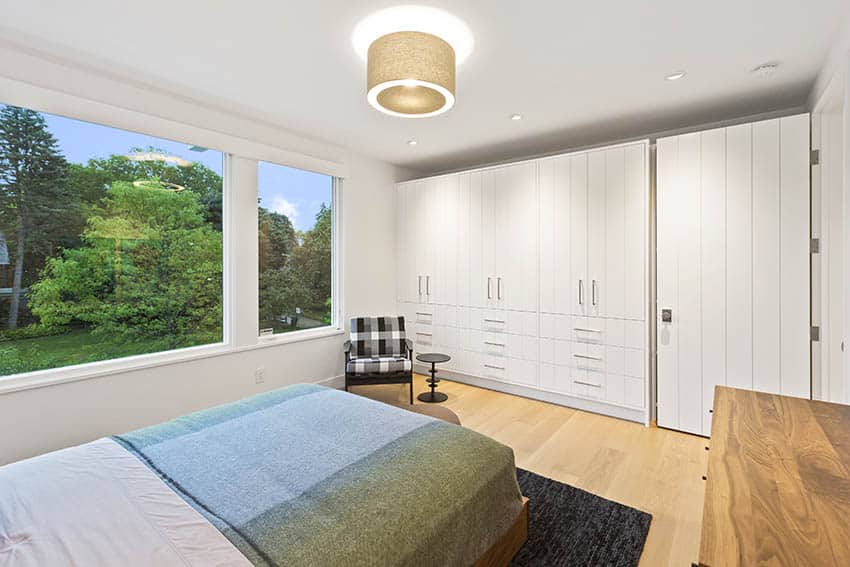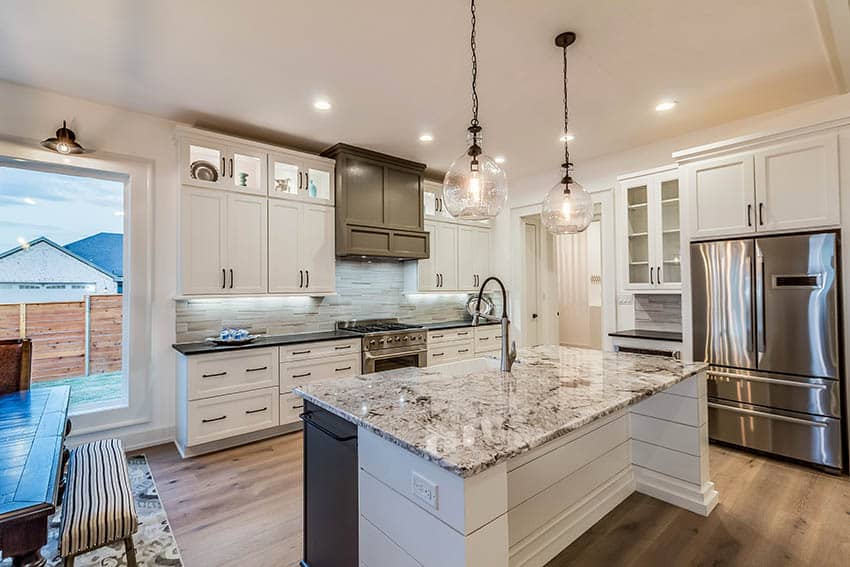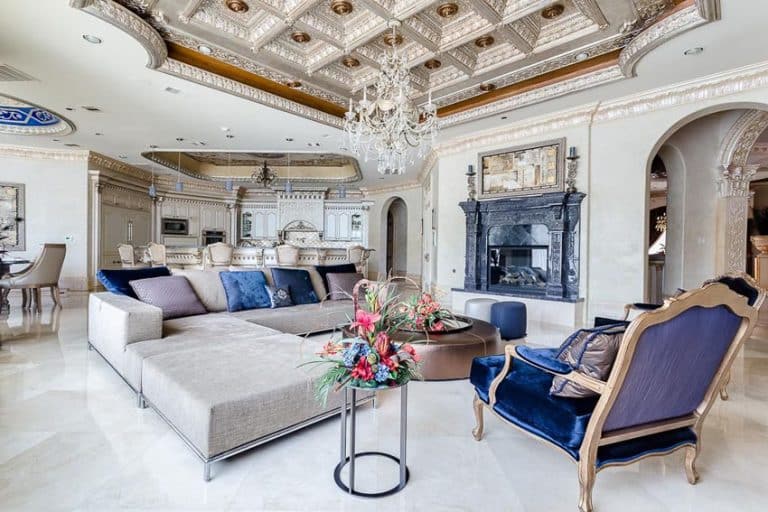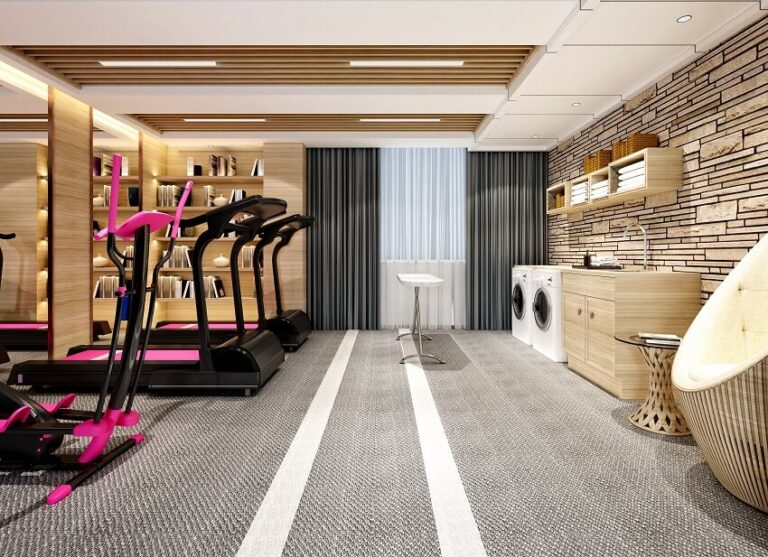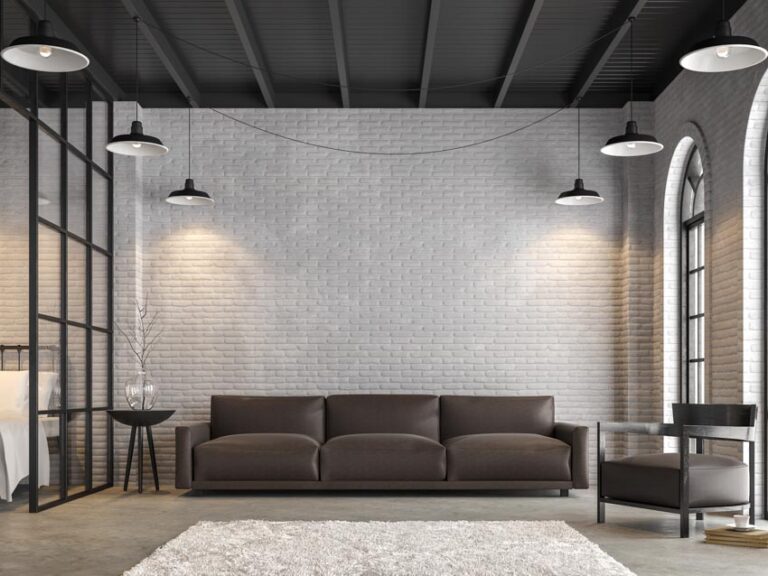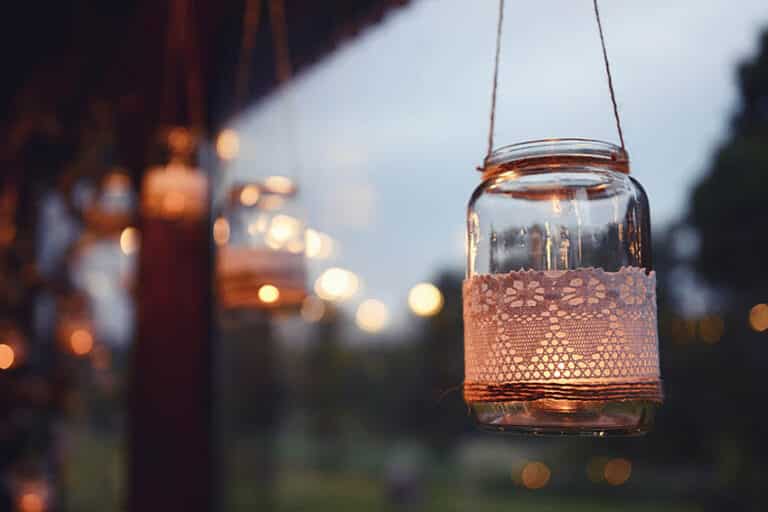25 Types of Ceiling Lights (Ultimate Design Guide)
The types of ceiling lights you install can make or break a room. Proper lighting isn’t just important because it allows you to use the room during the night and can help create the proper atmosphere.
Think about it. If you want a cozy bedroom, you want soft lighting that allows you to move around but is not too bright. On the other hand, you want bright lights over your kitchen counter so that you can see what you’re doing.
The functionality of your room will be affected by the lighting in the room, so you need to be careful when you choose the type of ceiling lights to install. Think about what kind of atmosphere you are trying to create and what types of activities you want to do while staying in that room.
The ceiling light fixtures you decide to install should suit the room’s general mood and make it a place that you want to either relax or work in. To help you come to a more informed decision, we’ve compiled this design guide to the common types of ceiling lights.
Different Types of Ceiling Lights
Before you decide what types of ceiling lights to use in your room, you must be familiar with the common fixture designs. The following are the most common types of ceiling lights according to style and design.
Recessed Lights
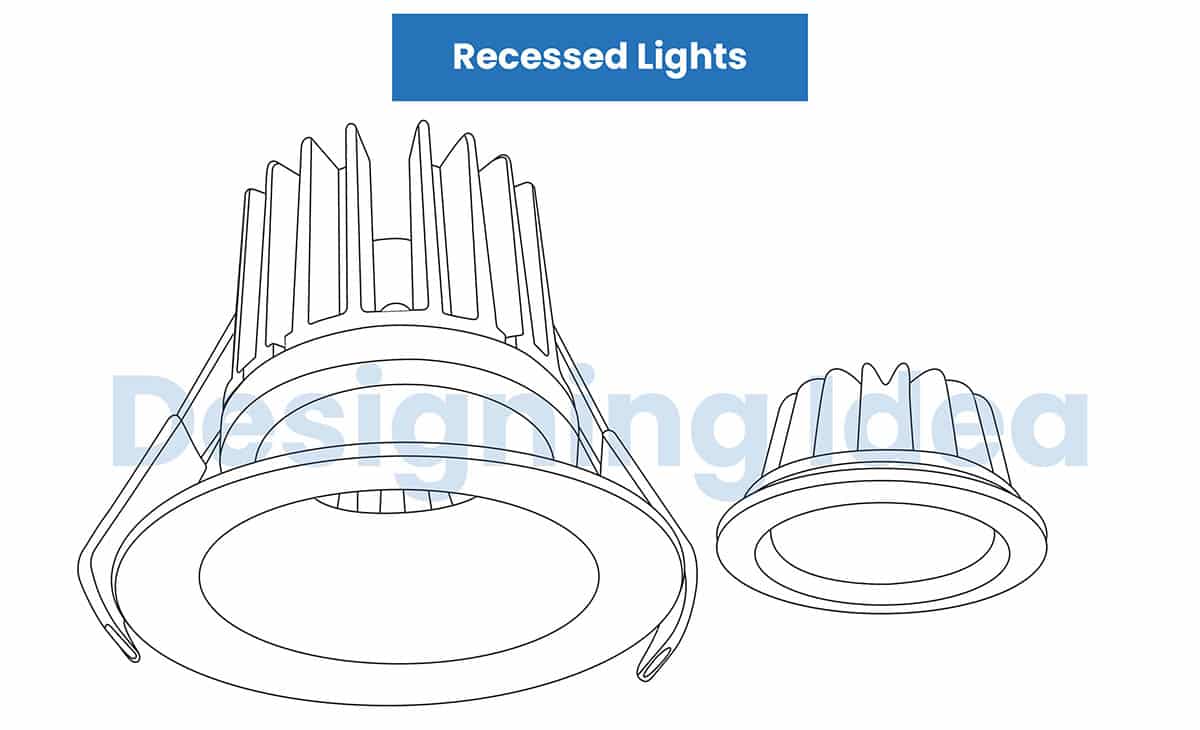
Recessed light fixtures are mounted inside the ceiling. They are installed inside the ceiling, in a hole or hollow, and usually covered with a glass panel and some trim. The light from the fixture is diffused through the panel to discreetly illuminate the room.
When a fixture is set into a ceiling, it is called a recessed light. A can light is another popular term for this style.
Recessed lights are a good choice of fixture for rooms with low ceilings. However, note that they don’t really diffuse enough illumination for a big space. However, they are a good choice if you are looking for ambient, accent, or task lights.
A recessed light fixture has two main components: the housing and the trim. The housing is the actual light fixture, the recess where the bulb is mounted.
The trim is a sort of decorated molding. It rises from the recess or housing and extends outwards to form the visible outer ring you see with recessed lights.
Recessed Light Trims
A recessed light trim is the visible part of the fixture attached overhead. Different styles are available depending on the effect wanted, functions, sizes, and your ceiling design.
Adjustable Trims – This allows you to adjust and aim the illumination from your light fixture. The trim is thin, while the interior fixture can be moved and angled to allow you to focus the light in the areas you want it. This is a great type of trim for accent lighting.
Open trims – Designed to fit tightly around the light. The bulb is mounted flush or nearly flush to the ceiling, offering unrestricted illumination. This is a good type of trim to have if you want to illuminate large areas.
Baffle Trims –The inside surface is slightly ribbed to trap and shape the light cast. The ribbed interior also minimizes the glare.
Reflector Trims – The inside surface is mirrored, which enhances the light’s illumination.
Pinhole Trims – A fixture with a pinhole trim has a thick trim that focuses the light into a small, concentrated beam.
This type of trim allows you to shine a spotlight on a specific spot. It’s a great option to install over a decorative element or piece of art that you want to draw people’s attentions to.
Shower Trims – A shower trim is specifically designed for use in luminaires for bathrooms or other areas with high humidity. These trims incorporate a tempered glass plate or cover which keeps the iluminaire bulb safe from getting wet.
Wall-washer Trims – These trims have a “half shield” in the interior that can be opened or close to focus the radiance. This is great for accent lighting.
To create recessed lighting, a hole is punched in the ceiling or wall, and housing for the light is installed inside it. The edge of the luminaire is flush with the surface, with metal pieces called ‘trim’ covering the raw edge of the hole.
The light fixture may have a metal lining, to help amplify the light. Depending on the desired effect, the hole may be covered with translucent or partially opaque glass.
Recessed lights are best installed where there is limited overhead space, such as hallways, and are a great way to fill a room with ambient lighting.
Mounted Lights
Mounted ceiling lights are placed flush or close to the surface. These types of light fixtures can provide ambient lighting for a whole room.
Mounted types of ceiling lights are categorized into two varieties: flush-mounted or semi-flush-mounted.
Mounted ceiling lights are especially good for fixtures in a medium or large room. If your room has low ceilings, this is also a good luminaire to have.
Flush Lighting Fixtures
Flush light fixtures are basically flat attachments that are mounted to the ceiling. This is a very versatile type of ceiling luminaire that suits a variety of applications and room sizes.
When there is no space between the ceiling and the luminaire, it is called a flush light. The design could be any shape, such as a dome, drum, or globe.
This light fixture design is popular because they are simple and discrete. Depending on the manufacturer, you can find flush fixtures that are around 12 to 24” wide. You should easily be able to find one that is the right size for your room.
Small flush light fixtures will fit into a small space, like a closet, hallway, or bathroom. Flush luminaires direct the light down straight into a room so they will fit well in a small face while providing ample illumination.
Take note, however, that flush light fixtures might not work in rooms with ceilings higher than 8 feet. That will leave too much empty space and might diffuse the light.
The advantage of flush lights is that they can splash illumination into all corners of the room rather than a recessed fixture, which throws a cone of light on the area directly beneath it.
Flush lights also stay cleaner longer than semi-flush or pendant lights because there is no surface upon which dust can accumulate.
Semi-flush Lights
Semi-flush lights are hanging fixtures that are mounted close to the ceiling. A semi-flush light installed close to the ceiling can be any shape. Unlike flush lights, there is space between the fixture and the ceiling.
This helps create the illusion of more space, as the illumination from the fixture will be reflected by the ceiling. The lights hang about 4 to 8” from the ceiling and have a diameter or about 7 to 23”.
As we pointed out above, flush light fixtures don’t work well in ceilings above 8 feet. Semi-flush lights are a good alternative as they look good and can provide optimal light when mounted on ceilings that are 8 to 10 feet high.
A semi-flush light fixture directs its light in two directions, down to the room and towards the ceiling as well. This feature will make your ceiling seem higher and can make a small room feel bigger.
Semi-flush lights require more frequent and attentive cleaning than flush lights. They can be distinguished from pendants and chandeliers by their static installation — no part of the light can swing or move.
Indirect Light Fixture
An indirect ceiling light fixture differs from other kinds of ceiling lights because it is not intended to light the room below it. Instead, the light is hidden, and the purpose of the fixture is to reflect light from the ceiling.
This allows for illumination without the glare of a bulb or a single intense source of light. Often seen in large rooms with low ceilings, one common design is a sheet of frosted glass over fluorescent bulbs.
Picture of indirect lighting in a walk-in closet.
Ceiling Strip Lights
Strips of LED lights are inexpensive and easily sourced through online retailers. They are also easy to install and often come with a sticky backing. They are incredibly lightweight and power efficient.
However, the strips themselves are not aesthetically pleasing. When installed behind crown molding, their attractive glow is reflected onto the ceiling, creating the illusion of more space by drawing the eye upward.
Colored or color changing LED strips can be used to create an atmosphere that matches the purpose of the room or your intended activity.
Strip LED lights are not intended to be used as a primary light source, but rather as an accent or enhancement.
Indirect LED Lights for Ceilings
LED indirect lighting is the same as ‘ceiling strip lights’ and is achieved by installing strips of LED lights on a room’s ceiling. This is a fun and creative style if you are going for a modern room design.
If you have a small room and you want it to look bigger, this is a good type of light fixture to use. The ceiling will reflect the light of the LED strips making it look like the ceiling is higher.
LED light strips come in a variety of colors and even change colors so that you can play around with that. While you can install the lights directly onto your ceiling, you can also install crown molding which will hide the LED strips.
Drop Ceiling Panel Lights
A drop or dropped ceiling is very common in modified industrial spaces. It is installed a few inches to several feet below the actual structural ceiling.
The space between the dropped ceiling and the true ceiling encompasses the guts of the building, such as ductwork and electrical cables.
Often, drop ceilings consist of individually removable panels, making it easier to maintain or repair the inner workings they conceal.
Light fixtures can be installed as part of a drop ceiling, either behind a translucent panel or with the light itself taking the place of the panel. This is technically a type of recessed lighting since the fixture does not protrude into the room.
Drop ceilings are often seen in basements and can create a cramped feeling. The recessed nature of the lights counteracts this as much as possible while still shedding light on the room.
Hanging Lights
Hanging ceiling lights are light fixtures designed to hang down from your ceiling. There’s usually some base that is mounted on the ceiling, while the actual light fixture hangs downward from the base.
A hanging ceiling light is attached to the ceiling by a cord or chain, unlike flush and semi-flush lights connected by a hollow, rigid rod.
The length of the hanging material can vary from a few inches to many feet. For ambient or general lighting, higher up is better. For task lighting, hanging lights should be adjusted so that the spill of the light covers the area in use.
The most common use of hanging ceiling lights as task lighting is over dining tables. Its purpose is to create a pool of light for a specific activity, such as sharing a meal.
As you can tell, these sort of ceiling lights might not work too well in rooms with low ceilings. However, they are good if you are looking for focus lights as they usually concentrate the light they cast over a small area.
Whatever type of hanging ceiling light fixture you decide to install, you’re going to have to think carefully about the size of the light and the room.
You can’t have a hanging light that is too low for your ceiling, otherwise you and other people might end up walking into the lights. The following are the most common types of hanging ceiling lights.
Pendant Lights
Pendant lights, sometimes called drop or suspender lights, consist of a base mounted on the ceiling from which a cord, chain, or rod is attached to, which dangles a light feature.
Pendant ceiling lights consist of a single bulb attached to the ceiling by a single chain or cord. Several pendant lights may be grouped together or even share the same base.
The shape and opacity of the shade determine how the light is distributed. A single pendant light in an otherwise darkened space will make a dramatic statement but may remind you of an interrogation. Pendant lights are, therefore best paired with other types of light sources.
Pendant lights only provide light in a specific spot, so unless you are just planning to light a very small space like a closet, you will need to use several pendant lights or use a mix of pendant lights and another type of light fixture.
For example, you could have a wide flush light fixture in the middle of your ceiling and just mount a few pendant lights in specific areas as task lighting. Or, if you have a long room or hallway, you can have several pendant lights in the middle of your ceiling going along the length of the room.
In general, a pendant light should hang 72 inches above a room’s floor. If you want to hang a pendant light over a counter, there should be 28-38 inches from the bottom of the light feature to the countertop.
Drum Pendants
A drum pendant light is basically a pendant light that comes with a shade built around the light fixture. This type of light fixture is commonly used as ambient lighting.
They may not be designed to light a large area, but they are great at shining a spotlight on specific areas as well as adding some atmosphere to the room.
Example of a drum pendant above a dining table.
Chandeliers
A chandelier is a branched light feature that is designed to be mounted on the ceiling. Unlike a pendant light, which usually only has one light bulb, a chandelier has several light bulbs mounted on each of its branches.
A chandelier with its collection of bulbs are connected together into one aesthetically pleasing design and hung by a single cord or chain.
If you decide to install a chandelier in your room, keep in mind that it will now be the central focus point of your room. All eyes will instantly be drawn to the chandelier, so you need to choose one that matches and compliments the overall style of the room.
If you install a chandelier in your room, it should hang about 30” over the piece of furniture you want to place under it, such as a dining room table. See more dining room light ideas here.
You also have to find the proper diameter of chandelier for your room. For example, if it’s going to hang over your dinning room table, choose a chandelier with a diameter that is half of the table length.
Another way to determine the proper diameter of a chandelier for a room is to add the length and width of the room. In inches, this number is the ideal diameter of your chandelier.
Hooks can be used in the ceiling to allow the chandelier to be moved to various positions, although depending on the height of your ceiling and the weight of your chandelier, this may not be practical for your situation.
Chandeliers were invented as a way to increase light by gathering many candles together in one place. Now that light bulbs are widely available, and the light cast is many times brighter than candlelight, one might expect the chandelier to fall out of use.
However, they are still one of the most popular and coveted types of ceiling lights and show no signs of losing popularity anytime soon.
Chandeliers reduce glare by turning down the intensity of each individual bulb and are thoughtfully designed to spread as much light as possible while minimizing shadows.
Linear Lighting Fixtures
Linear light fixtures are some of the most common types of light fixtures. They basically consist of one long light fixture that is either mounted or suspended from the ceiling. they are also referred to as ceiling light bars.
Linear light fixtures start with a base that is installed flush with the ceiling. A rod or bar hangs a few inches below the base. Usually, the bar is a straight line, although curvilinear shapes are also used.
The wiring of the light runs from the ceiling through the base and the rod or bar and terminates in a light socket. These light sockets often rotate to help aim or direct the light, but sometimes they are fixed in place.
Linear light fixtures provide a steady source of light that spreads through the room. Depending on the size of the room, one linear light fixture might be more than enough to serve your illumination needs.
Linear light fixtures are also commonly used in commercial settings such as offices, shops, restaurants, and other establishments.
Track Lighting
Track lighting is a form of linear lighting. It features multiple individual light features that are mounted, in a line or a track that is in turn either mounted or suspended from the ceiling.
Track lighting is a phrase that is often used, incorrectly, to refer to ceiling light bars. Where ceiling light bars have fixtures placed at specific intervals, the only customizable part of the experience is which way the light is pointed. Should you desire less light, your only option is to unscrew one of the bulbs.
Track lighting, on the other hand, is a strip installed into the ceiling. Instead of sockets that a bulb can be screwed into, the entire strip functions like a socket. Any compatible light fixture can be snapped into this strip, anywhere along its length. The fixtures can be moved or removed at any moment.
Some types of track lighting fixtures allow you to adjust the angle of the individual lamps to focus the light better. These are great if you are looking for accent or task lighting.
These qualities make track lighting incredibly popular in galleries and museums, where the amount and direction of the light needed changes from one installation or exhibit to the next.
Kitchen Island Overhead Lighting
Kitchen island lighting or island lighting is similar to track lighting in the sense that it features multiple light features mounted or hung over an area. A common design for kitchen island lighting features several pendant lights hung in a line.
Kitchen island lighting, however, is specifically designed to be hung over kitchen islands. They hang lower than most track lighting fixtures, in what is supposed to be a good height to illuminate a kitchen counter, providing cooks enough light to work in.
While designed for kitchen use, island lighting can also be hung over a work desk or table to provide task lighting.
Utility Lighting
In your home’s lighting design, form and function are combined to meet your need to see in the dark while also making the space attractive and comfortable. Utility lights discard form and focus purely on function — no frills or decorative touches.
Utility lighting is often found in garages, workshops, factories, and warehouses. You might choose to install utility lighting in your basement, garage, or storage room. Utility lights are a good option for a garage or other workspace where you need bright lights that focus on a particular area.
Utility lights come in two designs. You can get simple mounted flush type fixtures or casing with LED bulbs. If you go for the LED bulb design, it also has the advantage of being energy-efficient
Utility lights are plain and unadorned, with nothing to interfere or intrude upon their primary purpose, making sure you can see a workspace.
They are not intended to be aesthetically pleasing. This simplicity of design has a major benefit: utility lights are considerably less expensive than decorative light fixtures.
Types of Ceiling Lighting Materials 
After you’ve decided on the types of ceiling lights you want, you need to look into ceiling light materials. It’s the material that a light fixture is made of that will determine if it matches or fits the design of your room.
Glass
Glass is the most common material used for ceiling lights. Made from melted sand, it can take on a variety of appearances depending on how it was created and what was added during the process.
Glass light features are popular because of their ability to diffuse light. It is also a material that works with a variety of home design styles.
Glass light fixtures can come in a variety of decorative styles and shapes. You can also find some in different colors.
While some ceiling lights use completely clear glass, tinted or frosted glass cuts down on the harsh glare from a blazing light bulb, and is popular for this reason.
Glass works well as a material for flush mounts and recessed light fixtures. You can also find semi-flush mounts and pendant lights made of glass.
Fabric
If you are looking to set a relaxing mood, like for a bedroom or a cozy living room, you should look into light fixtures that incorporate fabric.
Fabric shades, for example, are a cozy addition to any room. They gently diffuse the light and cut down the glare without reducing the fixtures’ ability to illuminate the room.
The fabric shade acts to diffuse and dim the light, so this might not be the best choice for an already dark room. The darker the fabric is, the dimmer the light will be.
However, fabric light shades are highly effective at eliminating glare and softening harsh light, making fabric-shaded ceiling lights perfect for any room you spend time in just before bed, such as a study, living room, or bedroom.
A fabric shade will also allow you to softly focus the light in the direction you want, making a light fixture with a fabric shade a good option for accent lighting.
Fabric is also an interesting and versatile material that can ensure that your light fixture suits almost any room style. They come in not just a variety of colors, but even textures and patterns.
Fabric shades are a common design option if you are looking into flush or semi-flush lights. Fabric is also a common material used with drum lights and is usually less expensive than a glass or crystal fixture.
Metal
Once restricted to exterior lights, metal entered the world of interior lighting with modern and contemporary design.
Reflective metals will increase the amount of light in the room, while matte or brushed metal surfaces on your ceiling light will contribute an industrial vibe to your decor.
For those interested in industrial design who don’t want to sacrifice comfort, a light fixture is the perfect place to incorporate metal. After all, no one expects a ceiling light to be soft to the touch.
Metal light fixtures are heavy and require appropriate structural support, so make sure you understand the specifications before installing a metal light fixture in your ceiling, or better yet, hire a professional to do it for you.
With the rise of modern design styles, metal is becoming a more common material for light fixtures as it fits the sleek, stark, futuristic feel of this sort of room design.
Metal is usually used with track or rail lighting, as well as in kitchen island lighting. You can, however, find pendant lighting using metal shades.
Crystal
This material is commonly seen in chandeliers. Though you might also find pendant lighting and semi-flush fixtures that use crystal. Crystal is a delicate material that is definitely eye-catching.
Crystal is known for the dazzling way it refracts light. When lead or other minerals are added to melted sand, the molecules arrange themselves into highly structured and repeating patterns called crystals, which create millions of tiny surfaces to reflect and refract light.
The facets of crystal also provide a surface that the light can bounce off and diffuse through the room. The higher quality the crystal is, the more thoroughly radiance will penetrate it, and the more brilliant the illumination will be.
As you examine crystal from different angles, it will appear to shimmer and sparkle as your position allows you to perceive different beams of light.
Elegant, timeless, and expensive, crystal is the material lighting designers turn to for stand-out, centerpiece ceiling lights, such as chandeliers.
Plastic
Before you skip over plastic as an ugly, cheap, and ecologically indefensible choice of material for your ceiling luminares, take a look at some of the gorgeous contemporary plastic pendant lights on the market.
Made from recycled plastic, these fixtures are lighter and more eco-friendly than glass or metal, and their unique and highly customizable designs make them not just functional, but also beautiful.
Lighting Shapes
There are a variety of different shapes one can install depending on your lighting needs and interior design style.
Globe
Globe lights are usually made of glass, and can be transparent, smoky or frosted. The orb-shaped design has been in use longer than electricity, with globes of glass used to protect the flickering flame of candles or oil lamps.
Globe lights are one of the most common, stylish, and classic designs when it comes to ceiling lights.
Dome
The terms dome and dish are used interchangeably to describe ceiling lights that cover the bulb with a shallow bowl.
Dome lights are almost never made from transparent glass — etched or frosted glass is much more common.
The dome or dish acts as a diffuser, taking the intense and direct illumination emanating from the bulb and scattering it into ambient radiance.
Though styles and trends in light fixtures change, dome lights remain popular because they effectively coat the entire room with an even glow of ambient lighting.
Drum
A drum shaped luminaire can best be described as a short cylinder, resembling the percussion instrument from which it takes its name.
Drum lights can be flush, semi-flush, or hung as pendants. Depending on the design and the method of installation, drum lights can shine radiance in one, two, or three directions.
In the case of an opaque shade and a flush installation, the drum luminaire would only shed radiance directly below it. A more transparent shade would allow radiance to travel both down and to the sides.
A semi-flush installation with an opaque shade will shine radiance on the floor and ceiling, while a translucent shade will cast radiance in every direction.
Ceiling Lighting Features
When making your final choice on ceiling light fixtures in the room, you should also consider incorporating the following features.
Energy Efficient
LED bulbs are the most energy efficient lighting solution currently offered, and can screw into any standard bulb socket.
Less expensive, equally efficient, but shorter lasting, CFL bulbs are the most common choice for homeowners looking to increase their energy efficiency.
When used with the appropriate kind of bulbs, dimmer switches can decrease your energy use, or switch the bulb in your ceiling luminaire for a lower-watt alternative the next time one burns out.
Dimmers
Dimmer switches are an energy-saving feature that you should really consider. They allow you to adjust the luminaire’s brightness level.
This doesn’t just let you manipulate the amount of lumination in the room, it also allows you to change the mood and atmosphere. A dimmer switch controls the amount of power that flows to your light source therefore controlling the amount of radiance it produces.
Not every bulb is compatible with this variable power output, so make sure to check the box for indications of dimmer compatibility, as using a dimmer switch with a non-dimmable bulb creates a fire hazard.
When they first appeared on the market, dimmer switches got a bad reputation for energy efficiency.
When the dimmer was turned down, the excess of unnecessary electricity in incandescent bulbs was converted into heat, using the same amount of energy — or sometimes more — than a standard, non-dimmable bulb.
Halogen bulbs improved the situation somewhat, but it was not until CFLs and LED bulbs entered the scene that it made sense to dim the lights to save energy.
Nowadays, some houses have dimmer switches built into every room, for ultimate customizability. They are relatively inexpensive and easy to install, so if you’re putting in a new illumination fixture, adding a dimmer switch at the same time makes sense.
However, if your goal is about making sure the lights aren’t too bright, you’re better off installing lower wattage bulbs instead.
Smart Light Switches
Smart luminaire switches allow you to control lights throughout the interior and even exterior of your home from a single point. That point could be a panel installed on a wall, integrated with your thermostat or even home security system.
It could also be an app on your phone, allowing you to adjust the lighting in your home from any location.
Some of the innovations of smart switches & bulbs include voice recognition, smartphone technology enabled and bulbs with color changing technology and built-in bluetooth speakers.
Remote Controls
If you want to install a ceiling luminaire without the hassle of hiring an electrician, consider a remote-controlled luminaire.
These lights have non-invasive mounts that require nothing more than a few screws or even just strong tape. Make sure they are mounted properly on a clean surface to protect the safety of anyone passing underneath.
The remote control removes the need for a luminaire switch cord, or hard-wiring of any kind. A strip of heavy duty velcro attached to the wall and to the back of the remote will help ensure you never have to stumble through a dark room looking for it.
Wireless Ceiling Type Lights
Wireless ceiling lights run on electricity generated from batteries, rather than being hardwired into the electrical system of your home.
They are virtually indistinguishable from hard wired lights, although the lack of a switch may confuse your guests.
Wireless ceiling lights that are motion activated can be a great way to illuminate spaces like closets or basements without the need to grope in the dark.
Swag Lights
Swag lights are illuminaires that are not attached to your home’s electrical system. Instead, they are plugged into an electrical outlet.
A swag light is often hung from the ceiling as an extra accent lumination or task light that can illuminate a specific room area. It’s also used as a decorative piece as they often come with attractive shades in a variety of styles and colors.
Led Integrated Lights
LED-integrated fixtures are luminaire fixtures that the manufacturers have designed to use LED bulbs. While many traditional luminaire fixtures can use LED bulbs or tubes, LED-integrated fixtures already come with LED bulbs built in.
Integrated LED lighting fixtures have a longer lifetime then screw-in LED bulbs and are more energy-efficient than fluorescent or incandescent bulbs. The disadvantage is they are a little more expensive to install.
Light-Mounted Ceiling Fans
Ceiling fans can be mounted on ceiling lights or you can find a illumination fixture built into a ceiling luminaire fixture. They work best with pendant lights or chandeliers. Not only are they a nice decorative touch, but they can also improve the room’s air circulation.
Ceiling fans help regulate the temperature in your home by pushing cool air down or drawing warm air up, depending on which direction they rotate.
Since they require electricity to work and are positioned in the center of the room, it’s no surprise that they are often bundled with luminaire fixtures.
Usually, there will be two strings hanging down — one to control the luminaire and one to control the fan. This can get confusing if the power is turned on or off at the switch. Many manufacturers are now choosing to include remote control operations to simplify matters.
One big consideration when choosing a ceiling fan is to ensure that there is enough room for it. A fan needs to hang at least 7’ from the floor.
You also need to leave 8” to 10” from the fan blade’s top and the ceiling. Finally, you should ensure that there is at least 30” from the tips of the fan’s blades and any walls or obstructions.
Motion Sensing Illumination
A motion sensing luminaire can be installed in any room of the house. They are not recommended for bedrooms, as you may accidentally wake yourself up by turning on the luminaire when you roll over.
Because the sensors cannot distinguish between human and animal activity, families with pets may find that motion sensing lights in common areas are wasteful or unnecessary — your cat doesn’t need the whole house illuminated just for a trip to the litter box.
Motion sensing lights usually only activate when the environment is sufficiently dark, so it’s best not to depend on them for ambient lighting during sunrise and sunset.
Perhaps the best place for a motion sensing ceiling luminaire is the garage — it flips on when you arrive home or come out to retrieve something, and then turns itself back off when it is no longer needed.
Pantries, utility closets, and bathrooms are other places where a motion-sensing ceiling luminaire makes sense.
Sloped Ceiling Compatible Illumination
The only ceiling lights that are not compatible with sloped ceilings are flush and semi-flush lights. Because these are intended to be mounted parallel to the floor, they look awkward when installed at an angle, and direct the radiance into the opposite corner of the room rather than straight down.
Instead, choose track lights to direct the radiance where you want it, or a long pendant luminaire to emphasize the height of the ceiling.
ADA Compliance
The purpose of ADA construction standards is to provide equal access to resources for all users of a given space, regardless of their physical limitations.
The standards, which are mandatory in public buildings built after a certain point, cover everything from width of doorways, height of faucets, and even the placement of switches.
While you are usually not required by law to comply with ADA regulations in your private residence, doing so will increase the comfort of disabled guests and could raise the future resale value of your home.
When it comes to overhead lighting, there are a few accessibility concerns to keep in mind. First, if people will be walking under the bulbs, the lowest part of the fixture can be no less than 80 inches from the ground.
Where they are installed in front of doorways, there must be at least six inches between the bottom of the lumination fixture and the top of the doorway.
Bulb Types for Ceiling
When shopping for ceiling illumination fixtures, you might get a bit confused about the types of bulbs available. It is important, however, to make sure that you know what type of bulb that your fixture uses, as it will determine if the bulb with fit.
The most popular types of luminaire bulbs for ceiling fixtures are CFL, LED, halogen and incandescent bulbs.
Compact Fluorescent Lights (CFL)
These are some of the most common types of bulbs available. They are affordable and energy-efficient. You should consider using these bulbs if you want a light fixture for either ambient or task lighting.
These are a very energy efficient type of luminaire bulb that was designed to replace the incandescent bulb. They have been shown to be up to 75% more energy efficient than incandescents. However, they are slowly being phased out as well for LED bulbs by consumers.
CFL light bulbs are still commonly used in recessed luminaire fixtures, bathroom vanity lighting, as well as concealed fixtures. They are generally used in places out of sight due to their appearance, which is not as aesthetically pleasing as other types of bulbs.
Some pros of CFL lights are they are energy efficient and offer an assortment of color temperatures including cool radiance. On the cons side, CFL bulbs contain a small amount of mercury which need to be recycled appropriately, take time to warm up and can provide a harsh lumination.
LED Light Bulbs
These are the most energy efficient type of luminaire, using 90% less energy than the other options. They are also durable, which is good because they are more expensive. These are good bulbs to use if you need task lighting.
LED stands for ‘light-emitting diode’. Incandescent bulbs use electricity to heat a filament until it is so hot that it glows.
LED bulbs use electricity to stimulate electrons contained in a diode. The excited electrons emit photons, and we perceive them as lumination. Because no heat-generation is required, the LED diode and bulb stay cool to the touch, and the quality of the lumination is also described as cool.
The lack of heat production is precisely why LED lights are so much more energy efficient than incandescent bulbs.
Compact fluorescent light, or CFL, is similarly energy efficient, but the bulbs will only last half as long as LED bulbs.
You can put an LED bulb into any luminaire and (depending on how often you use it) not need to change it for decades. This makes it a perfect fit for ceiling lights, which often require a ladder to reach.
For some styles of ceiling luminaire, such as flush or semi-flush, the fixture has to be partially disassembled every time the bulb needs to be changed, and you’re at risk of dropping one of the tiny screws holding everything in place or even damaging the shade.
LED lights lower the risk of damage or loss by decreasing the frequency with which lights need to be changed.
Incandescent Bulbs
Incandescent bulbs have a wire filament that sheds radiance by using electricity to heat argon gas. These types used to be the standard bulb on the market.
Now due to energy requirements the standard 100, 75, 60 and 40 watt bulbs have been mostly phased out of use.
The only type of incandescent bulb still often used is for chandeliers. These have a lifespan of about one year and can be used with dimmer switches.
Halogen
Halogen bulbs are durable and more energy-efficient then incandescent bulbs. They are a little more affordable than LED and emit a nice radiance that resembles natural light.
Halogen lights work by emitting halogen gas in an enclosed capsule. They have a lifespan of about one year.
Choosing a Ceiling Light Bulb
Halogen lights last longer than their incandescent argon cousins, both styles are being phased out because of their high environmental cost.
Compact fluorescent light or CFL bulbs also contain argon, but add mercury to the mix, which makes them toxic to dispose of. However, they are incredibly long-lasting and energy efficient.
LED lights use electricity to produce photons, which are perceived as illumination by the human eye. They last even longer than CFL bulbs and are considered non-toxic for disposal purposes.
Whatever type of bulb you opt for, you will have a choice about the temperature and quality of the radiance provided. Always check your luminaire base and manufacturer recommendations.
FAQs on Overhead Lighting Fixtures
The type of ceiling design in the room will also be a factor in determining the correct types of ceiling lights the room needs. Here are a few specific ceiling lights FAQs that pertain to the proper lighting of certain ceiling types.
How to Choose the Right Lighting Fixture Types for the Ceiling
You must decide what illumination you need to choose the right ceiling luminaire for your room. Is it ambient lighting, adding general illumination to the space? Recessed, flush, or semi-flush ceiling lights will meet this need.
Are you looking for task lighting to help you use the space effectively, such as lighting a conversation area or work area?
Track and rail lights are very flexible and customizable, and pendant lights can provide a defined pool of radiance.
Or maybe the purpose is to highlight the ceiling creating the illusion of more space. LED strips are the best way to achieve this goal. They can additionally be used for under cabinet lighting just as effectively to add visual interest and additional illumination.
What Is the Best Positioning for Lights?
A good rule of thumb for positioning recessed lighting is to divide the height of the ceiling by two, and place lights according to the result.
A hallway with eight foot ceilings would require lights every four feet, while a 20 foot ceiling will look better if they are spaced ten feet apart.
Make sure the bulbs are of a strong enough wattage to permit the resulting cones of radiance to overlap.
If the ceiling luminaire is a task light, it should be centered over the area where the activity will take place. The diameter should not exceed more than 50% of the total width of the table.
Flush and semi-flush lighting fixtures meant to provide ambient radiance should be centered in the middle of the ceiling.
What Type of Lighting Is Best for High Ceilings?
Recessed lighting fixtures can be a good option for a room with high ceilings, you need to make sure that you install multiple fixtures that are angled strategically to point straight down and illuminate different areas that need it.
Pendant lighting and chandeliers are also great ways to take advantage of the space provided by rooms with high ceilings.
The best way to illumuinate a room with a high ceiling would probably be recessed lighting with pendant lights hung over specific areas you want to spotlight.
You could also try having a chandelier in the middle of the room and recessed lights placed at strategic points around the room to add some illumination to areas where the chandelier’s light doesn’t reach as well.
Track lighting fixtures can also be used in rooms with high ceilings as focus or task lighting. For example, mount a track lighting feature over your work desk or counter.
You can’t use track lighting as your main illumination source in a room with a high ceiling as it will just not be able to shed enough radiance, mounted as it is so high above the floor.
What is the Best Lighting for Cathedral Ceilings?
Cathedral ceilings are known for the soaring heights they can achieve and sought out because of the feeling of space they can give. As they are high ceilings, hanging lights such as pendant lights and chandeliers are an attractive and functioning lighting option.
Chandeliers are an especially good option for cathedral ceilings because they are designed to throw luminescence downwards and upwards, so they illuminate the ceiling as well.
This increases the feeling of spaciousness. For the same reason, a few drum pendant lights scattered across the ceiling as accent lighting are also an attractive option.
Consider strategically placed recessed illumination if you want task or spot lighting in a room with a cathedral ceiling. You can also install a track light fixture at the lower points of the ceiling to spotlight a certain area and serve as a task light.
When choosing lighting features for cathedral ceilings, you should also consider the type of bulbs that they use. CFLs and LEDs are probably the best choice due to the illumination they provide.
LEDs are also worth considering because of how long they last. High cathedral ceilings may be difficult to reach if you need to change a bulb and a fixture, so you want to avoid it by using long-lasting bulbs.
What Kind of Lights Can You Put in a Drop Ceiling
If you want to light a room with a drop ceiling, you should probably go with either recessed lighting fixtures or mounted lighting fixtures.
While recessed lighting fixtures should provide you with the illumination you need, you need to be careful when choosing the bulbs. Incandescent bulbs are not recommended for recessed lighting fixtures in a drop ceiling. They produce too much heat.
Instead, you should install recessed lighting fixtures using LED or halogen bulbs. Not only are these bulbs “cooler” than incandescent lights, they are also more energy efficient.
What is Ambient Lighting?
Ambient lighting is a photography term. It refers to any lighting that the photographer did not add or manipulate while creating an image — the illumination that already existed in the location.
Another term for it is general lighting. In other words, ambient illumination doesn’t have a specific purpose like accent lighting or task lighting. It’s just supposed to chase the darkness out.
Ceiling lights have the ability to cast general illumination over large portions of a room without calling attention to any one area, and for this reason they are perfect for providing ambient illumination.
When the lighting in a room is well-balanced, ambient illumination earns its name — you don’t really notice it or where it’s coming from, but the room would feel dark or wrong without it.
Best Lights for Bedrooms
Ceiling lights with fabric shades are most suitable for the bedroom.
You can also use pendant lights that hover over the nightstands, but choose a shade with a bottom panel to keep the luminaires from getting into your eyes when sitting in bed.
Best Lightings for Living Room
For the living room, dimmable switches will allow you to customize the illumination level to the activity you’re about to engage in.
This is also a great place to put smart lights, which can be turned on remotely to give the impression that your home is occupied while you’re away.
Flush or semi-flush style lighting will provide ambient or general illumination, which can be supplemented with accent and task lighting.
Best Lighting for a Kitchen Ceiling
Recessed lighting is a very popular choice in kitchens with limited overhead space. Pendant lights are frequently used in ceiling spaces above an island.
Adjustable lights, such as track lighting or illumination rails, are also commonly used. Adjustable lights can be an effective way to segment the kitchen into brightly lit workspaces.
Directed illumination can be segmented by — sink, prep area, stove — and angling the lights properly will eliminate any shadows cast by your cabinetry.
What Types of Lights Give the Most Illumination?
To maximize the lighting from your ceilingillumination fixture, choose a semi-flush design with a glass or crystal shade. This allows radiance to travel in every direction, providing maximum illumination and reflectability.
Where to Buy Ceiling Fixtures Online
Trusted retailers of ceiling lights include Home Depot, Wayfair, and Lowe’s, as well as the big box stores like Target and Wal-Mart. IKEA also sells ceiling lights from its online store.
What are your favorite types of ceiling lights? Let us know what you think in the comments.

